Prehistory: Notable Art & Architecture
1/113
There's no tags or description
Looks like no tags are added yet.
Name | Mastery | Learn | Test | Matching | Spaced |
|---|
No study sessions yet.
114 Terms
Prehistoric Cave Dwellers/Paleolithic/Stone Age Art (Fact 1)
Art Movement in which its artists worked by lamplight in the namesake locations while doing the namesake thing while painting with the aid of stone lamps
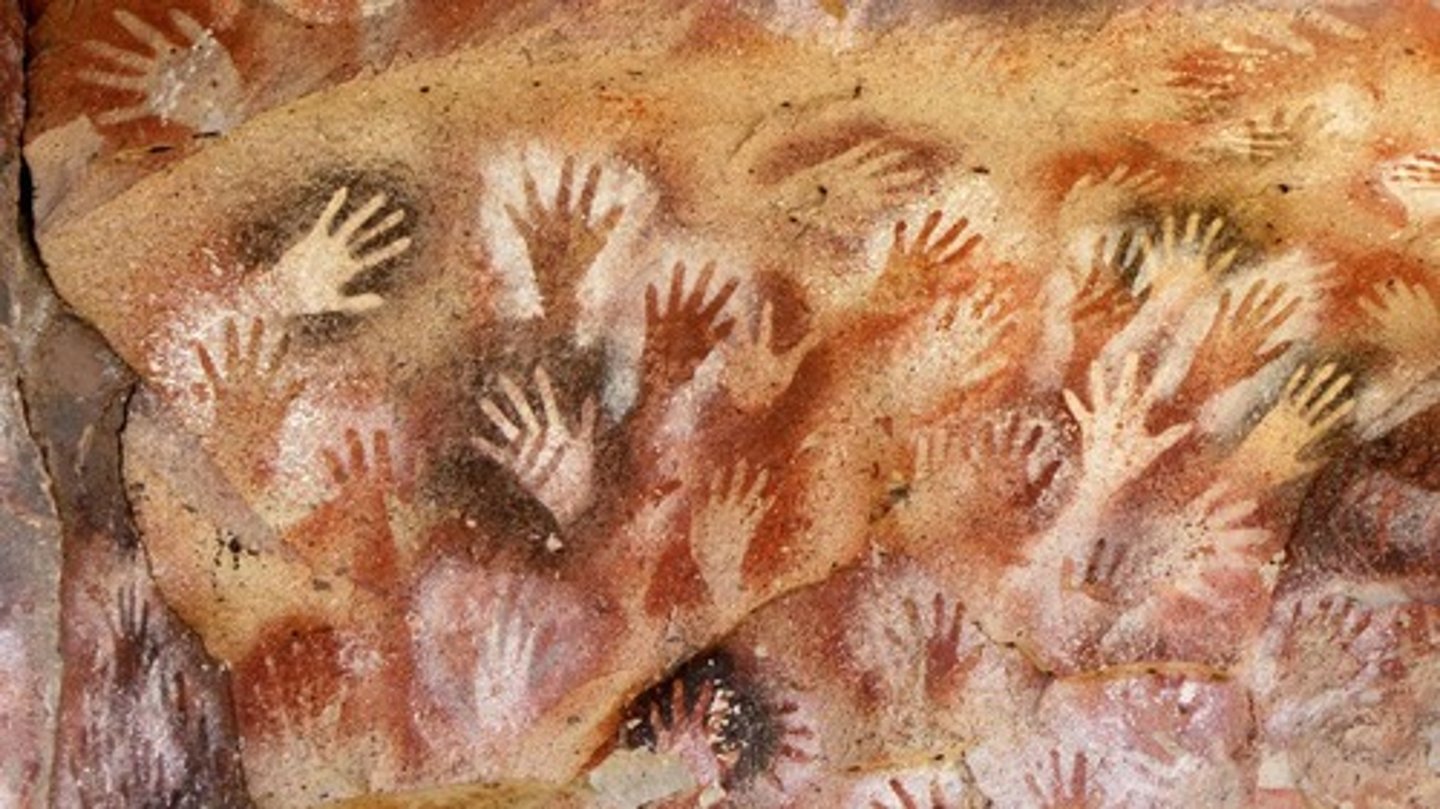
Prehistoric Cave Dwellers/Paleolithic/Stone Age Art (Fact 2)
Art Movement in which its artists believed that painting animals would be a sort of good-luck charm to increase the chance of their hunting efforts being successful given the cold weather of the Ice Age they are living in that is making it harder for them to hunt

Prehistoric Cave Dwellers/Paleolithic/Stone Age Art (Fact 3)
Art Movement in which its artists somehow were able to use pigments of yellow, red, and black from various minerals such as powdered Hematite, Calcium Phosphate, and Manganese Dioxide, even if they had to go as far as 30 miles from their namesake homes in order to get it
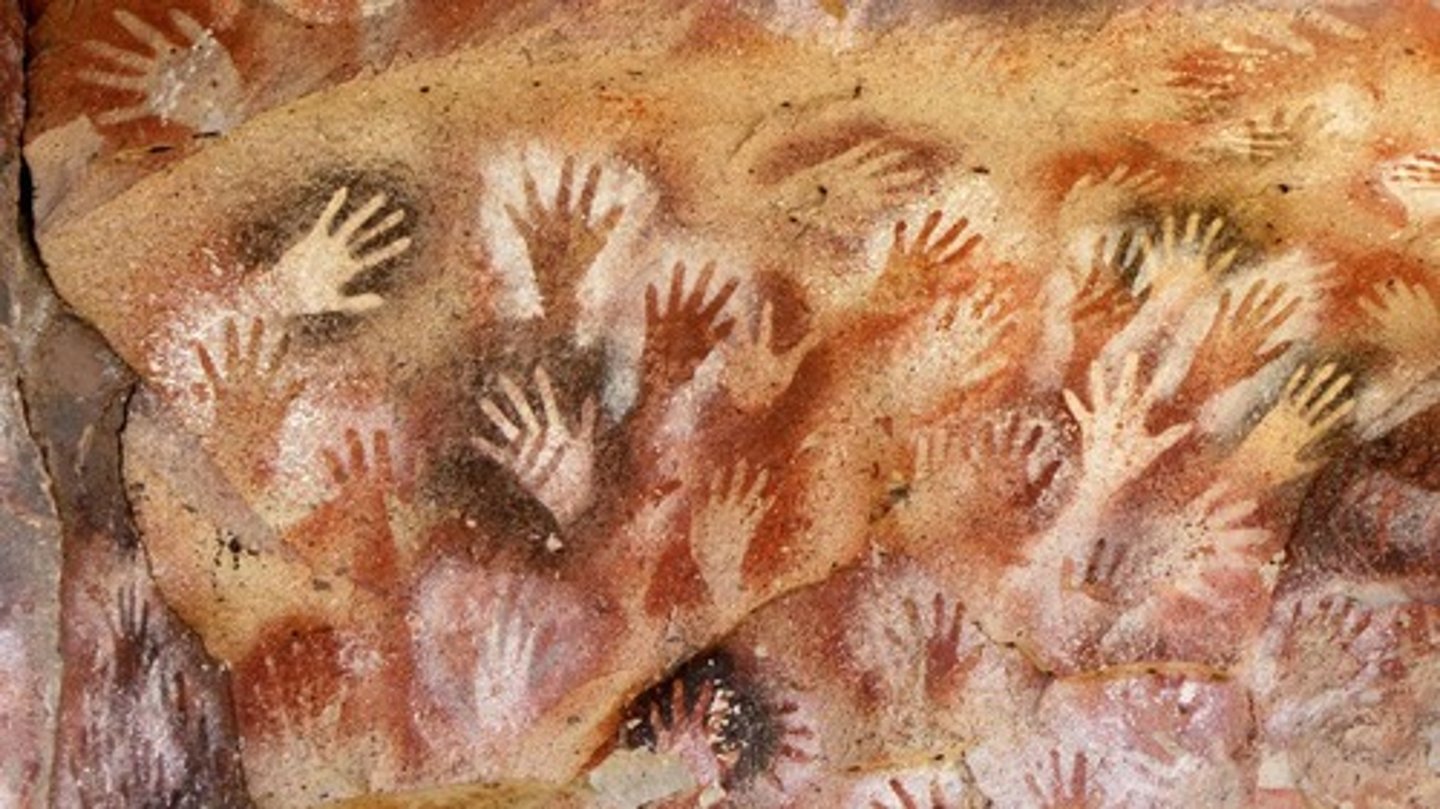
Prehistoric Cave Dwellers/Paleolithic/Stone Age Art (Fact 4)
Art Movement in which the art it pertains to has no meaning since nobody is sure of the meaning, thus giving it a mysterious, awesome power that affects our response to looking at it by deepening it rather than ignoring it because of its meaninglessness; in other words it has some meaning but one just doesn't know what that meaning is exactly
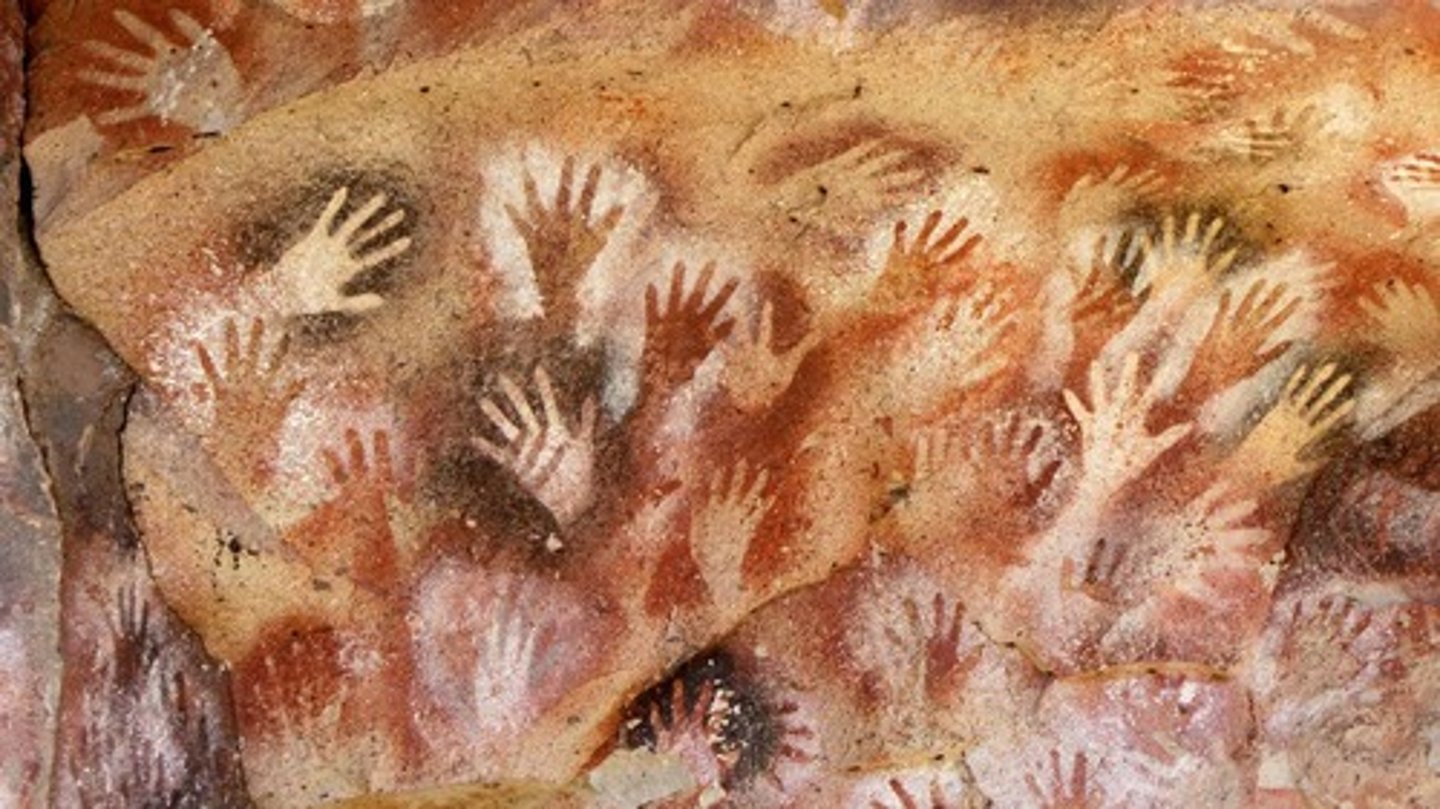
Prehistoric Cave Dwellers/Paleolithic/Stone Age Art (Fact 5)
Art Movement which is likely the first Art Movement ever, having started in Europe (rather than Africa) for many (possible) reasons, one of which is that (given that Homo Sapiens Neanderthalensis are one candidate for having made the art) Homo Sapiens Neanderthalensis made the art in order to supplement new religious practices to form better social cohesion in order to better reorganize themselves into different structures in order to compete against and survive among Homo Sapiens Sapiens
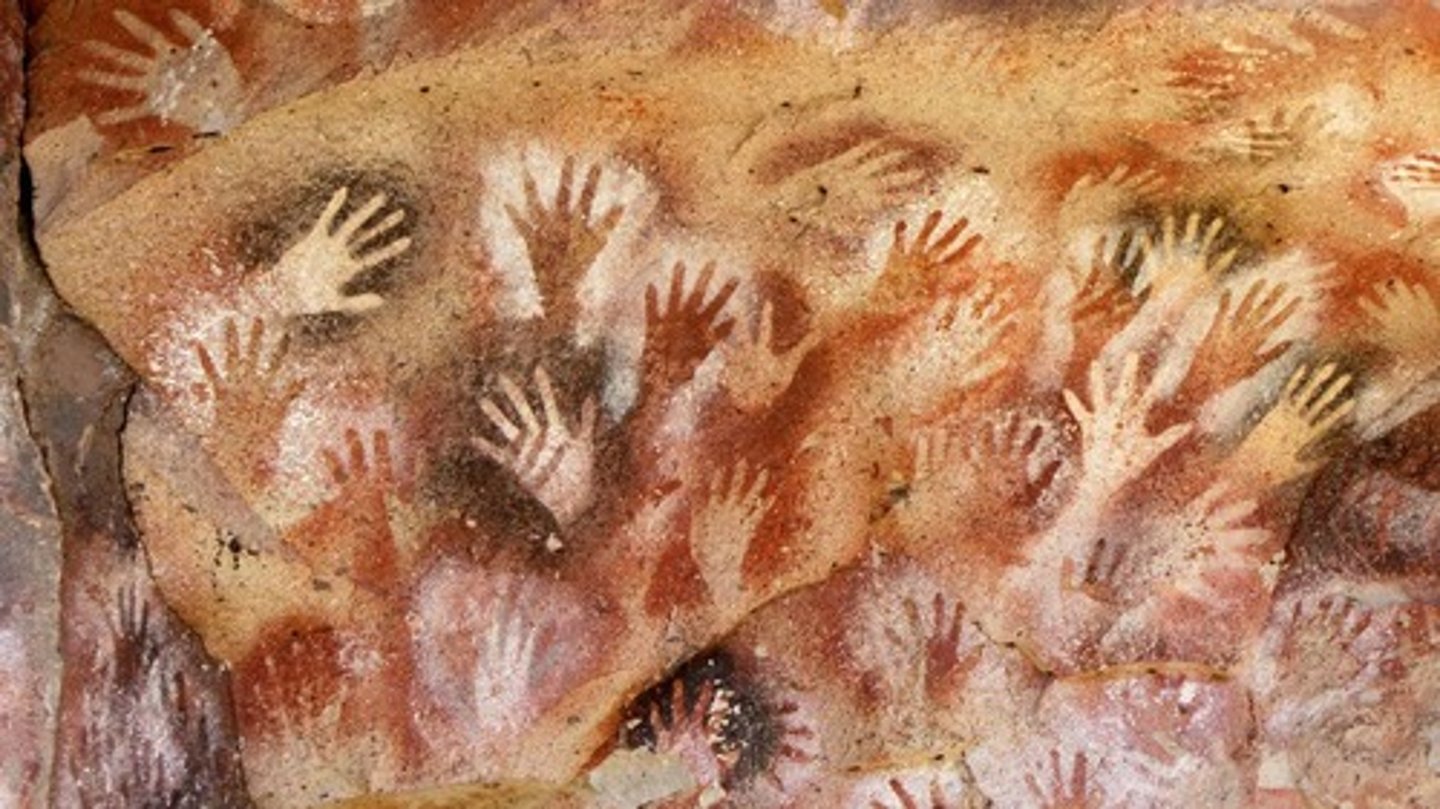
Prehistoric Cave Dwellers/Paleolithic/Stone Age Art (Characteristic 1)
Art Movement characterized by depicting themes and subjects associated with the hunting of large game animals (mammals) such as hunting, piercing, wounding, killing, and/or just displaying Woolly Mammoths, Horses, Boars, Bears, Bison, Deer, Oxen, Lions, Rhinos, Wild Cats, and Fish; usually in the form of painting (with human figures appearing vary rarely or not at all)
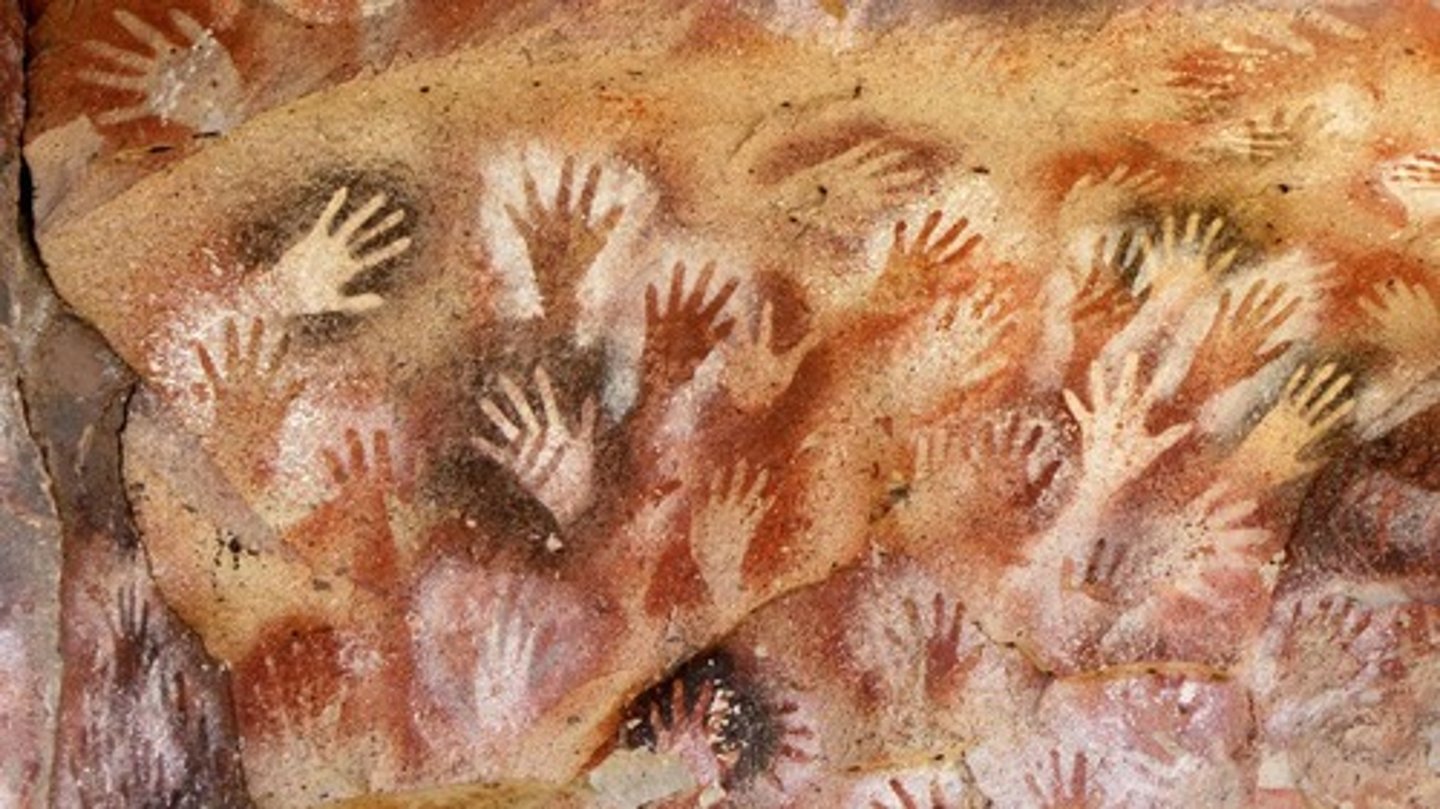
Prehistoric Cave Dwellers/Paleolithic/Stone Age Art (Characteristic 2)
Art Movement characterized by depicting themes and subjects associated with abstract, geometric shapes and signs (which actually outnumber the images of animals 2:1), exemplified by 32 symbols that span 30,000 years and the entire continent of Europe, 65% of which remained from the start to end of that time period despite differing distributions of them geographically suggesting that the namesake artists had some form of communication even if it was merely graphical and not written

Prehistoric Cave Dwellers/Paleolithic/Stone Age Art (Characteristic 4)
Art Movement characterized by the production of paintings, engravings, and figurines; all for the first time, around 10,000-40,000 years ago, and made by ancient humans, either by Homo Sapiens Neanderthalensis first or Homo Sapiens Sapiens first since Homo Sapiens Sapiens definitely made art but Homo Sapiens Neanderthalensis may have as well before them (scientists still don't know for sure but are leaning towards Homo Sapiens Neanderthalensis as having invented art before them for many reasons)
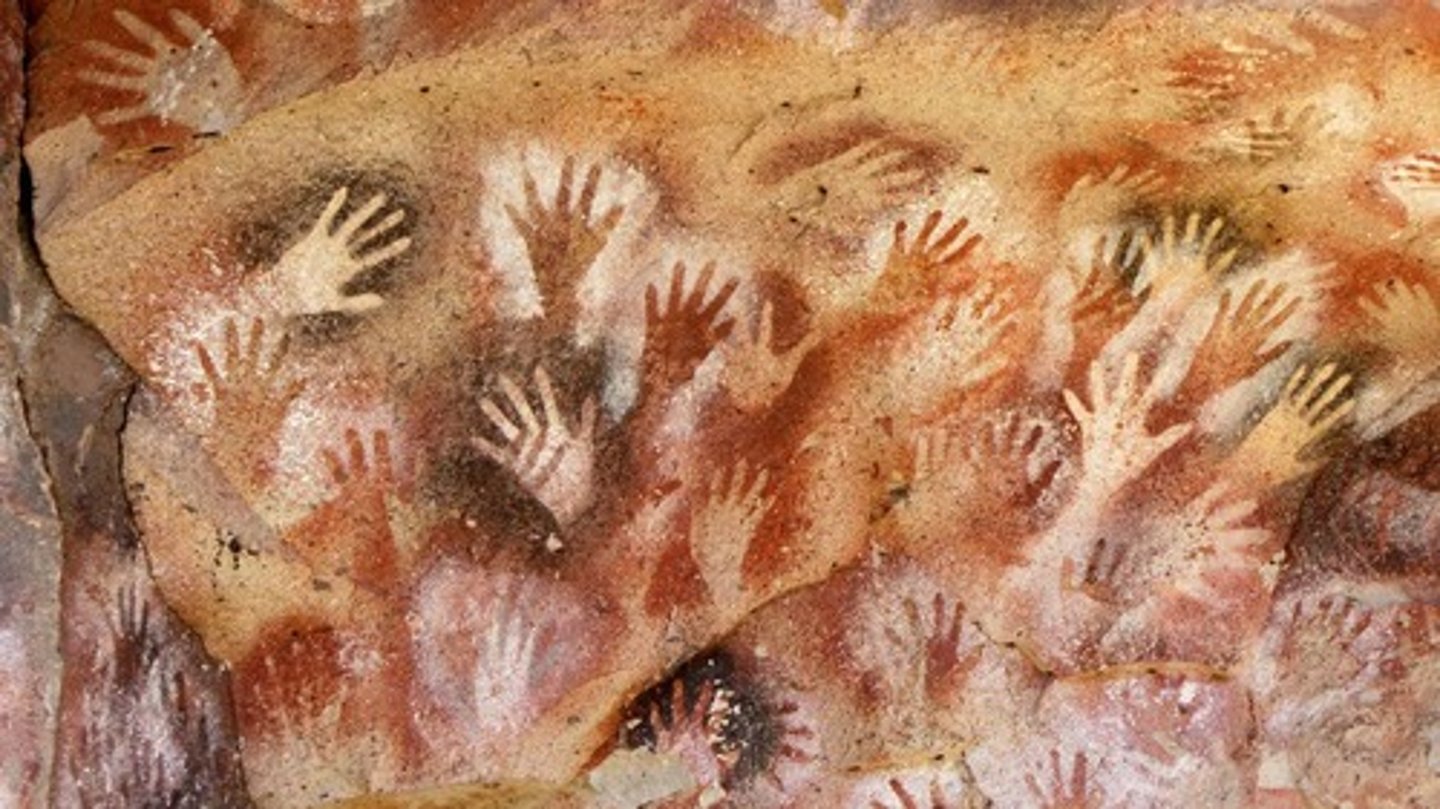
Prehistoric Cave Dwellers/Paleolithic/Stone Age Art (Characteristic 3)
Art Movement characterized by depicting themes and subjects associated with Fertility, which represented prosperity and expansion of the "tribe", by depicting pregnant women or female characterizations known as "Venus's" with exaggerated features like that of their breasts or butts, usually in the form of sculpture or figurines
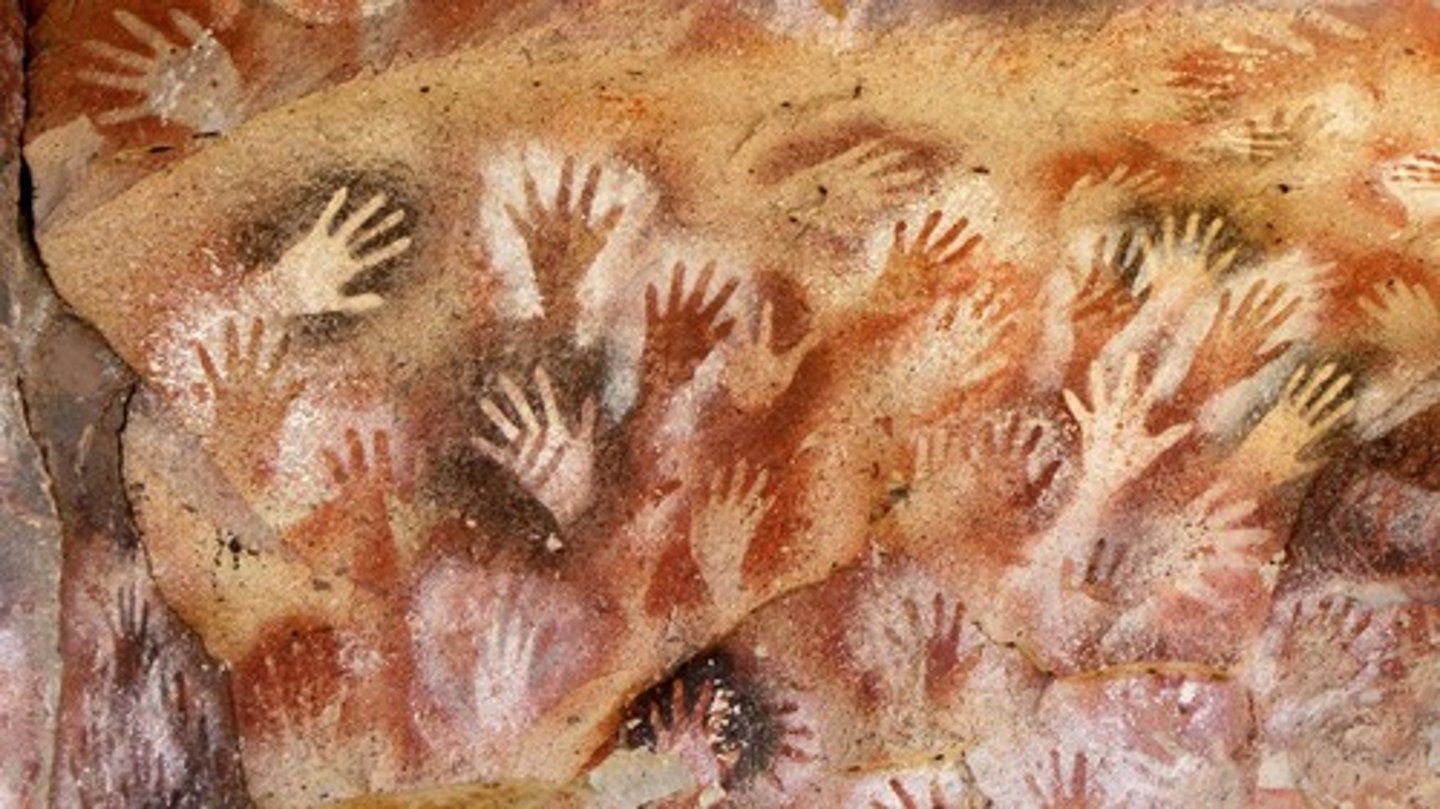
Prehistoric Cave Dwellers/Paleolithic/Stone Age Art (Characteristic 5)
Purpose: Art Movement characterized by works such as paintings that (most likely) were made for some ritual or mystical purpose since many of the paintings show animals wounded by physical attacks and pierced by depicted arrows from bows and arrows and even real arrows shot at the wall, suggesting that the purpose of painting them in this way was to weaken the animal's strength, speed, and/or power before the hunt and/or control the animal's spirit nevertheless being used for hunting rituals
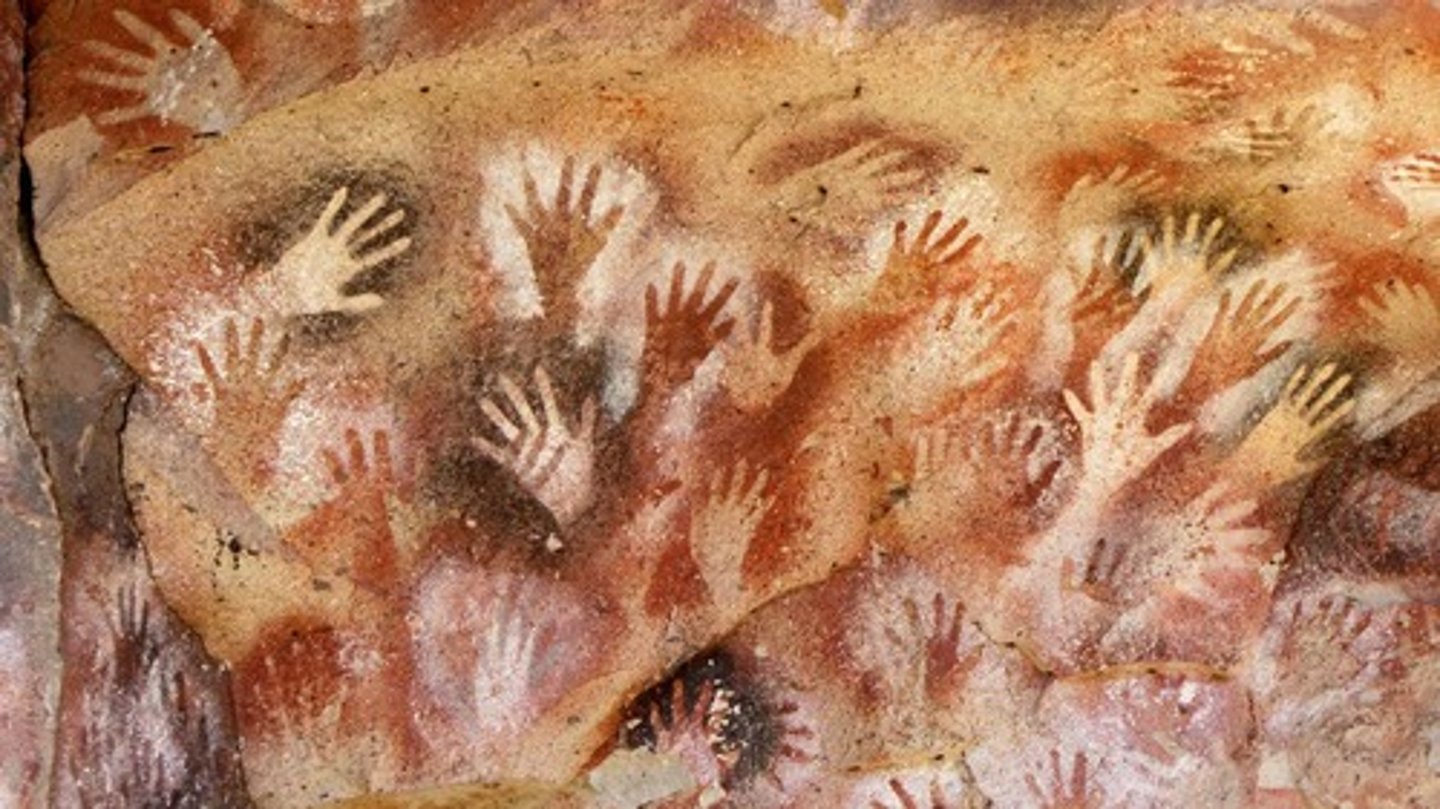
Prehistoric Cave Dwellers/Paleolithic/Stone Age Art (Characteristic 6)
Purpose: Art Movement characterized by its artists having used art, specifically their paintings of animals, as a way to express their desires for natural abundance and as a sort of "protection" against the dangers of the wilderness or for religious or cultural rites, rituals, and/or celebrations
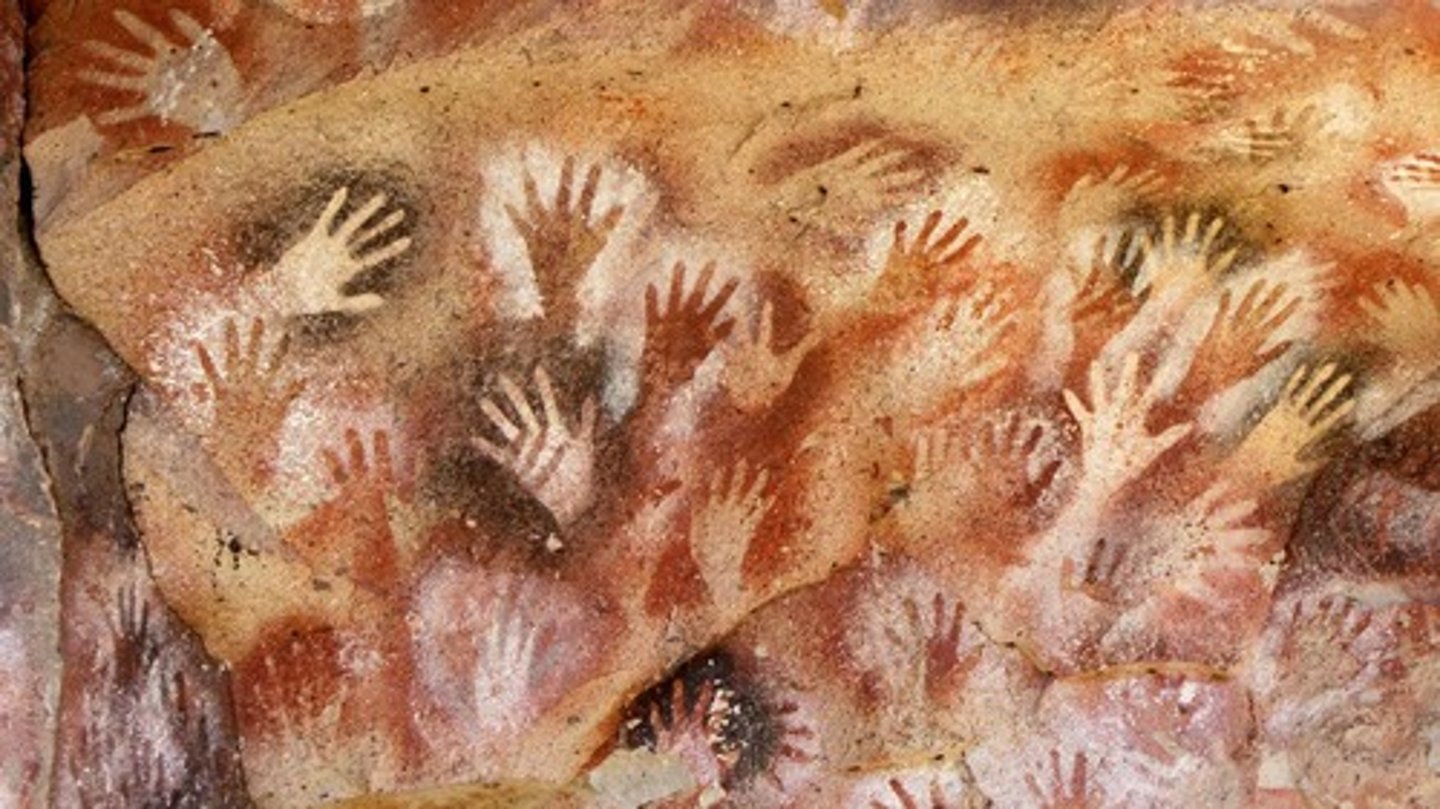
Prehistoric Cave Dwellers/Paleolithic/Stone Age Art (Characteristic 7)
Purpose: Art Movement characterized by its artists having used art, specifically their sculpting of figurines of humans and animals, for rituals that were carried out before the hunt

Prehistoric Cave Dwellers/Paleolithic/Stone Age Art (Characteristic 8)
Art Movement characterized by an uncanny naturalism and anatomical accuracy resembling the animals these painters observed and for which their lives depended on hunting such animals for food and to survive

Prehistoric Cave Dwellers/Paleolithic/Stone Age Art (Characteristic 9)
Art Movement characterized by barely and/or rarely representing humans, and if representing them, doing so poorly that they appear as stick-like figures or as symbolic forms
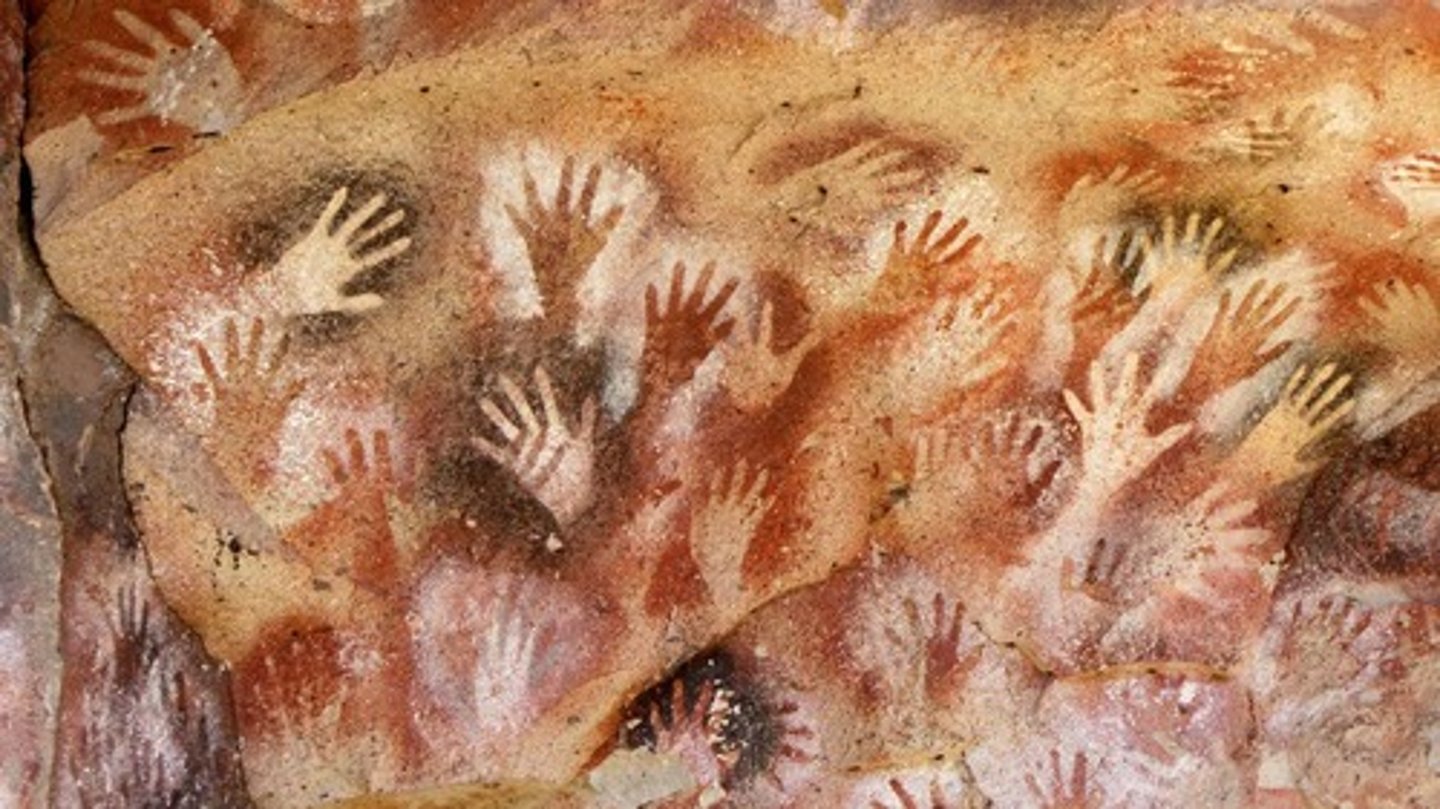
Prehistoric Cave Dwellers/Paleolithic/Stone Age Art (Characteristic 10)
Historical Context: Art Movement that took place during a time before metal tools, agriculture, and the domestication of wild animals, when humans made tools from stones and bones
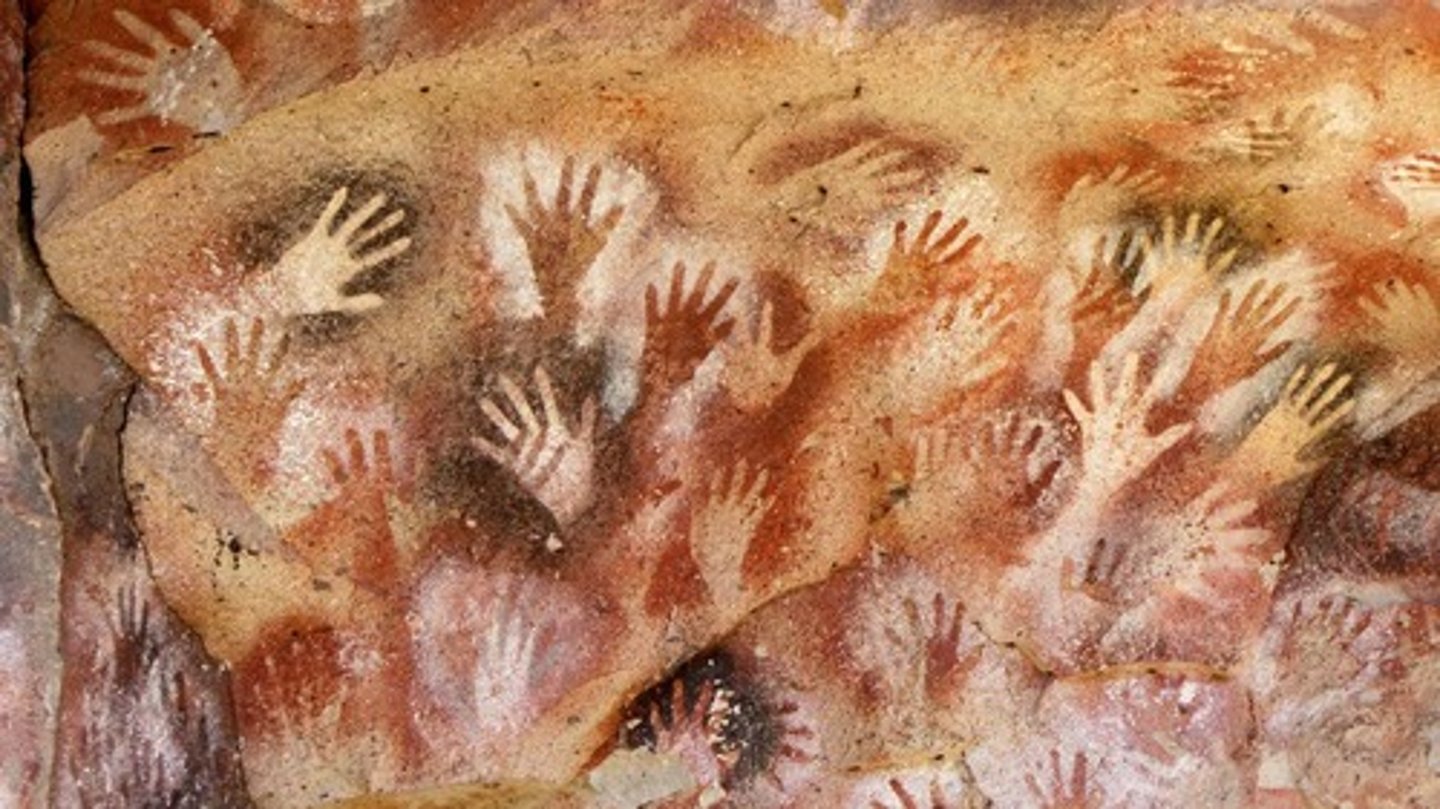
Prehistoric Cave Dwellers/Paleolithic/Stone Age Art (Characteristic 11)
Philosophical Context: Art Movement that represents control over nature, with works such as figurines depicting humans gaining or taking control over natural phenomena such as nature and animals

Prehistoric Cave Dwellers/Paleolithic/Stone Age Art (Characteristic 12)
Art Movement characterized by its paintings being painted on top of one another, almost as if they were erased over each other
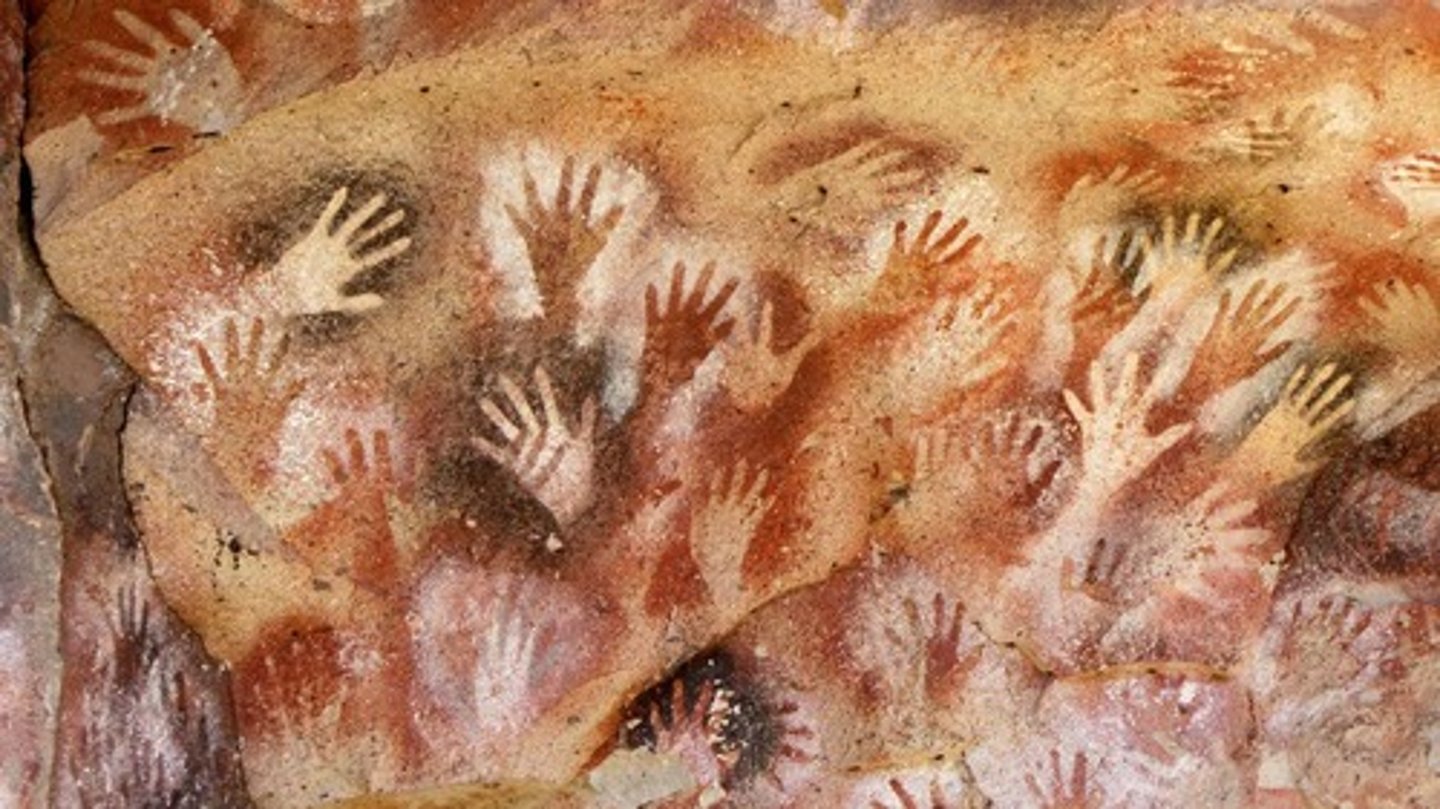
Prehistoric Cave Dwellers/Paleolithic/Stone Age Art (Characteristic 13)
Art Movement characterized by other common elements, symbols, and/or themes such as red handprints, tectiforms, and dotted artworks
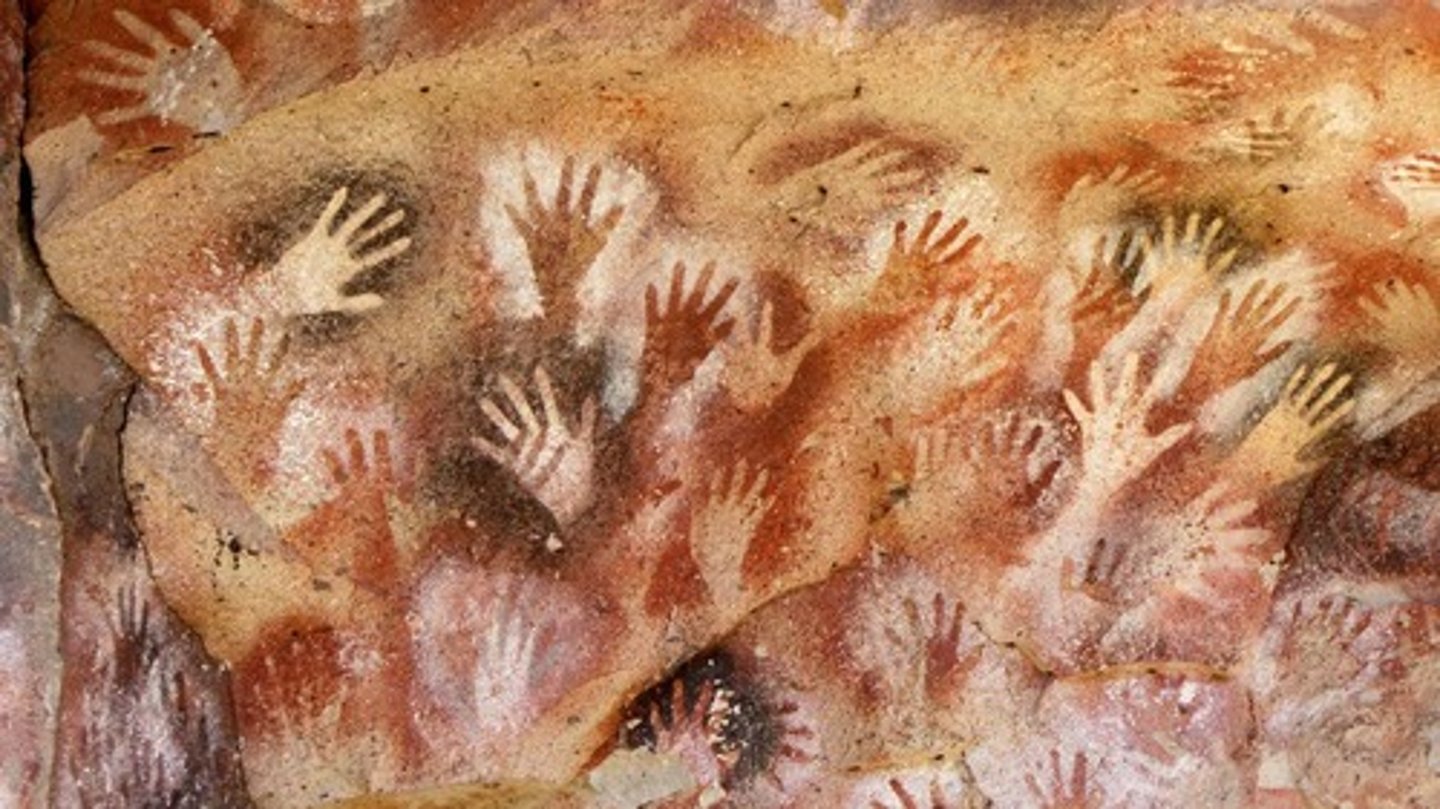
Prehistoric Cave Dwellers/Paleolithic/Stone Age Art (Characteristic 14)
Art Movement characterized by the use of mixing two different two-dimensional perspectives such as Profile View and Frontal View or a "Composite Perspective" (blending/mixing of multiple perspectives into one and/or multiple images), making their subjects more recognizable and to more accurately depict animals in motion
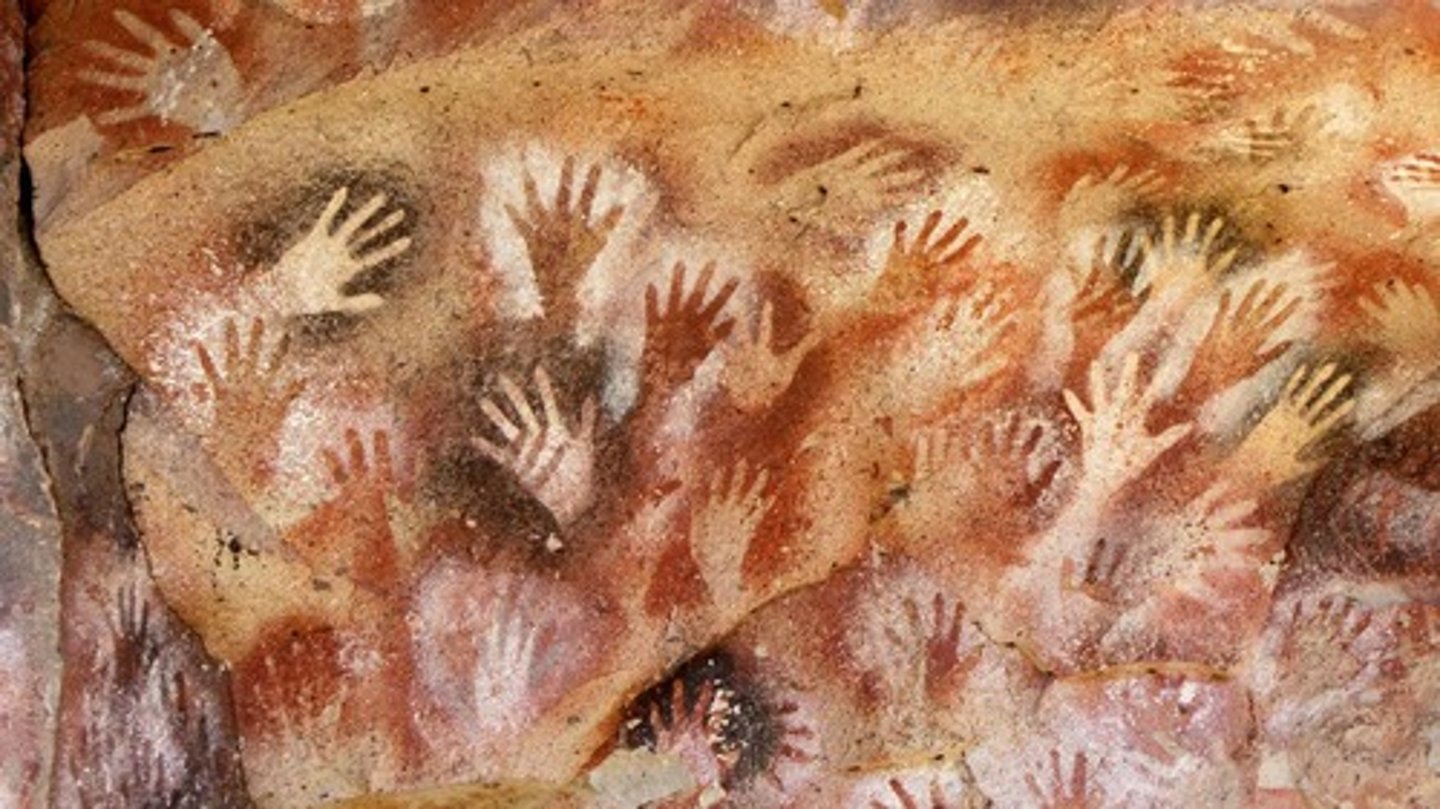
Prehistoric Cave Dwellers/Paleolithic/Stone Age Art (Characteristic 15)
Art Movement characterized by having omitted backgrounds/landscapes
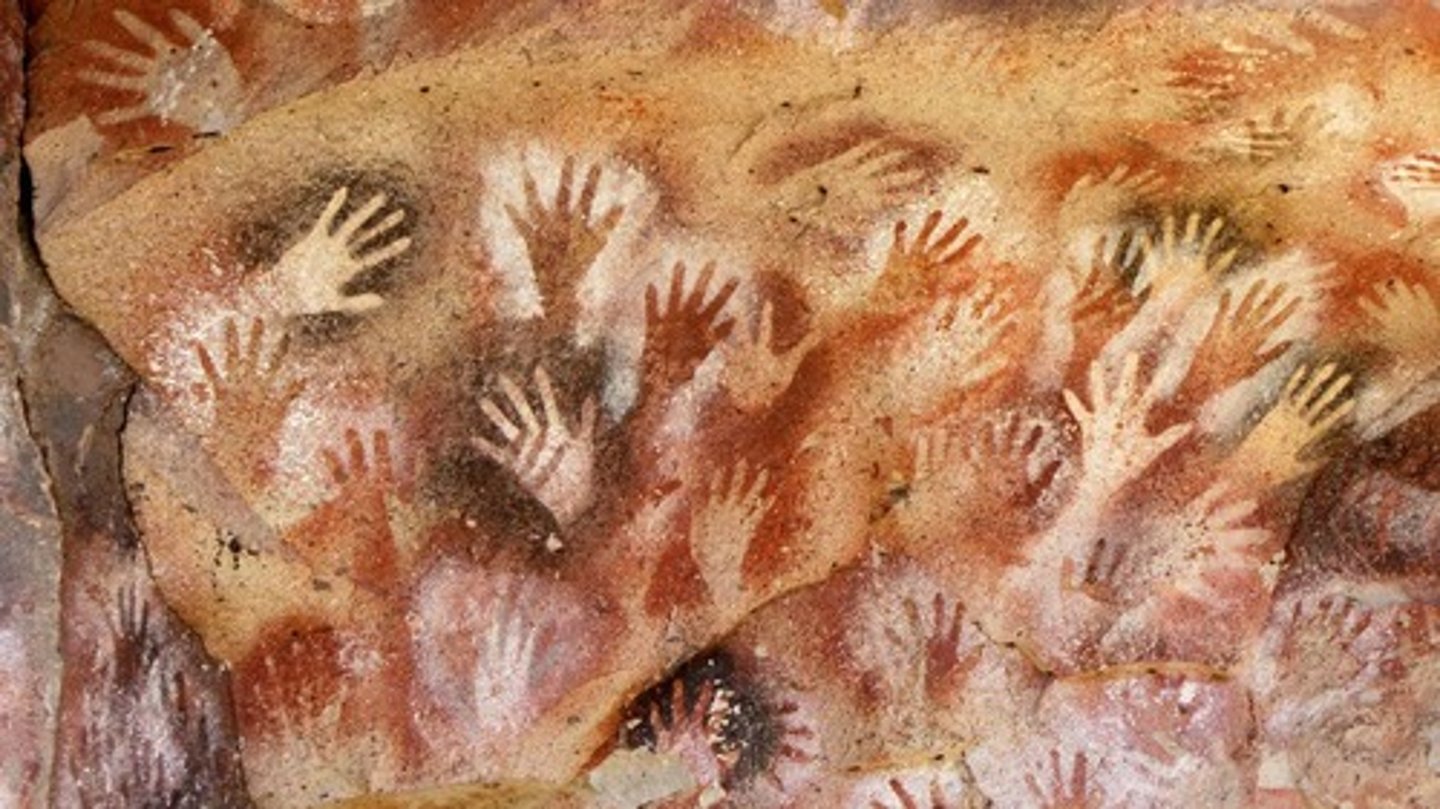
Prehistoric Cave Dwellers/Paleolithic/Stone Age Art (Characteristic 16)
Art Movement characterized by art having been made by men, women, and even children; usually being hunters, but some have considered it was made by holy men in "trancelike states"
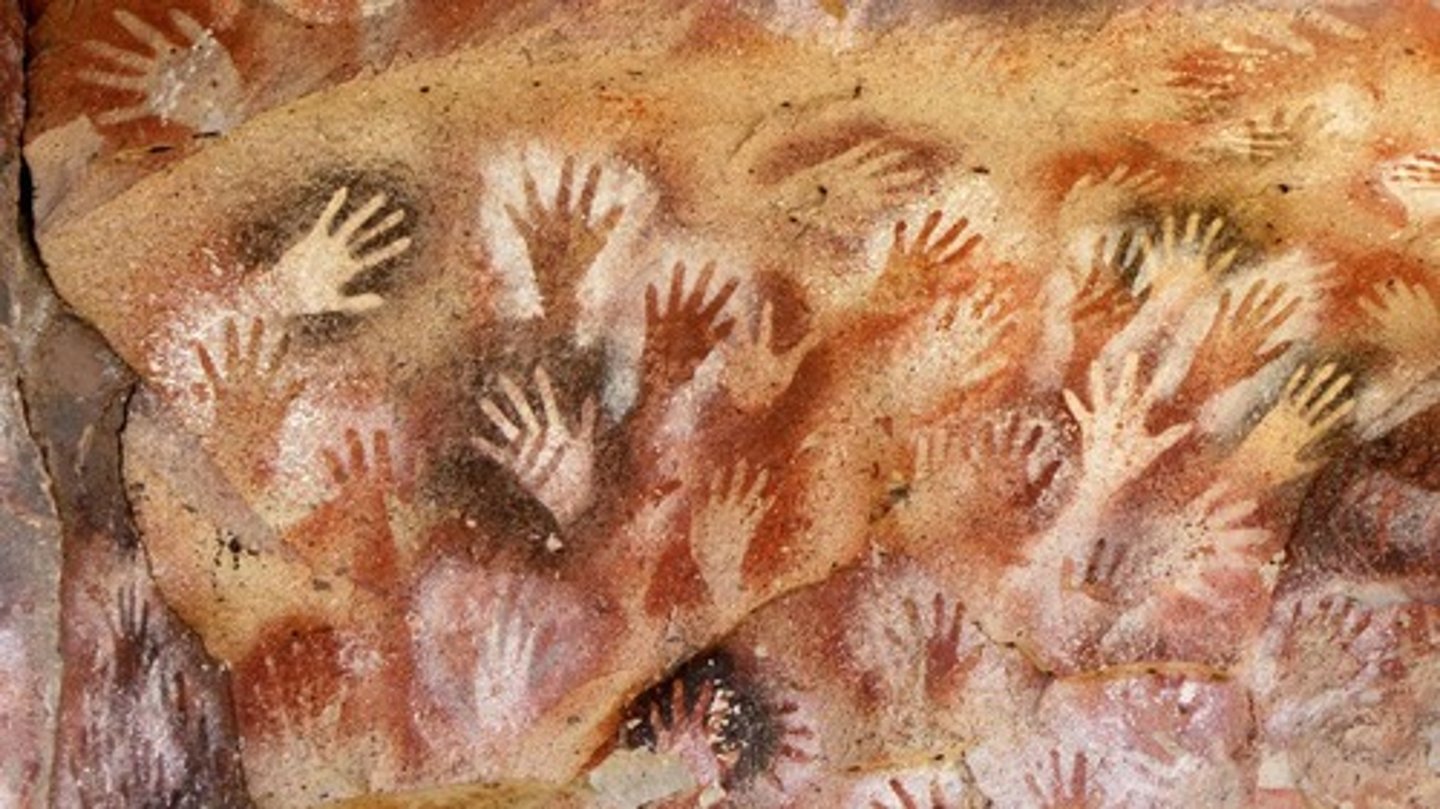
Prehistoric Cave Dwellers/Paleolithic/Stone Age Art (Characteristic 17)
Art Movement characterized by its painted images following the contours of the cave to create depth and shade
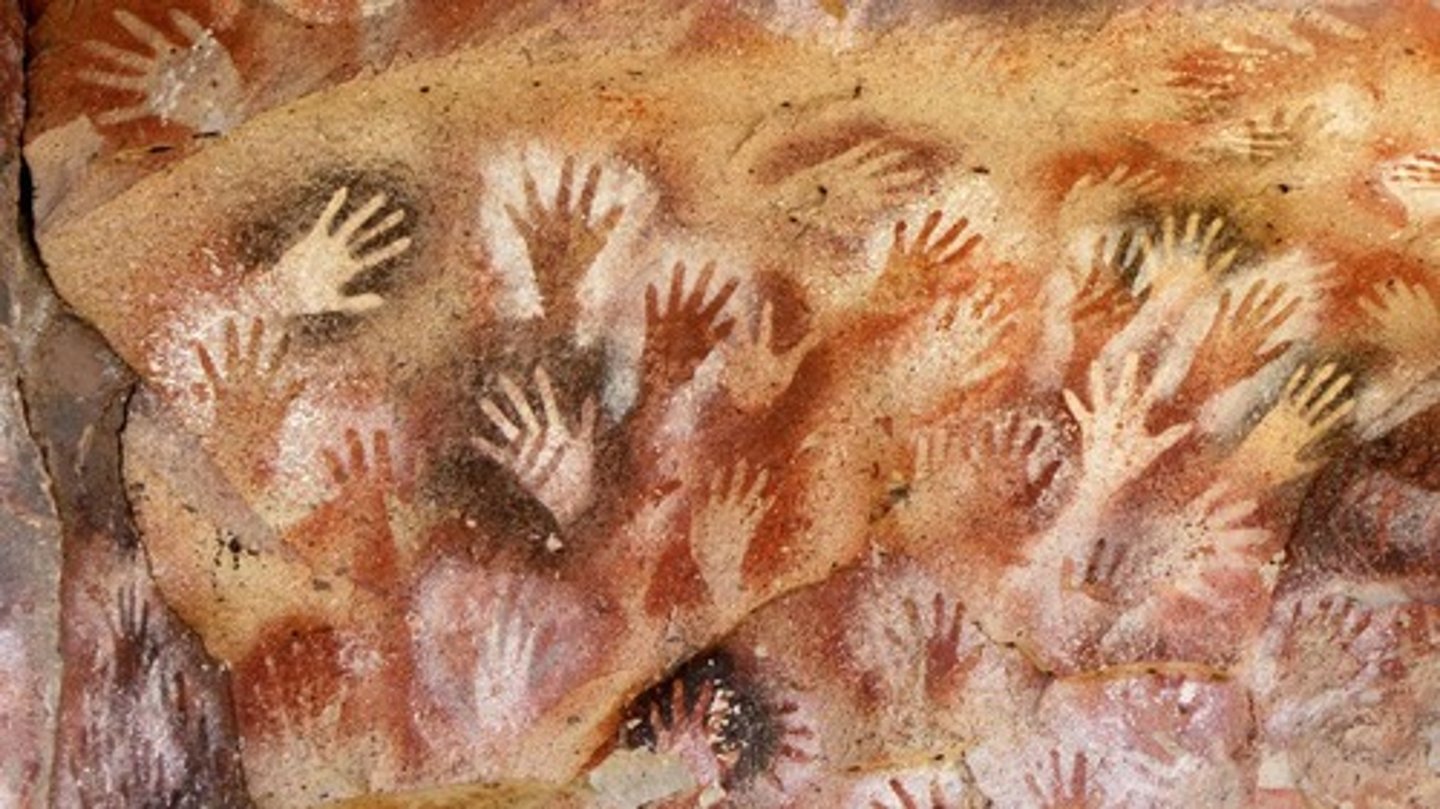
Prehistoric Cave Dwellers/Paleolithic/Stone Age Art (Characteristic 18)
Purpose: Art Movement characterized by having been made (most likely) as a form of documentation of the world around them like contemporary scientists
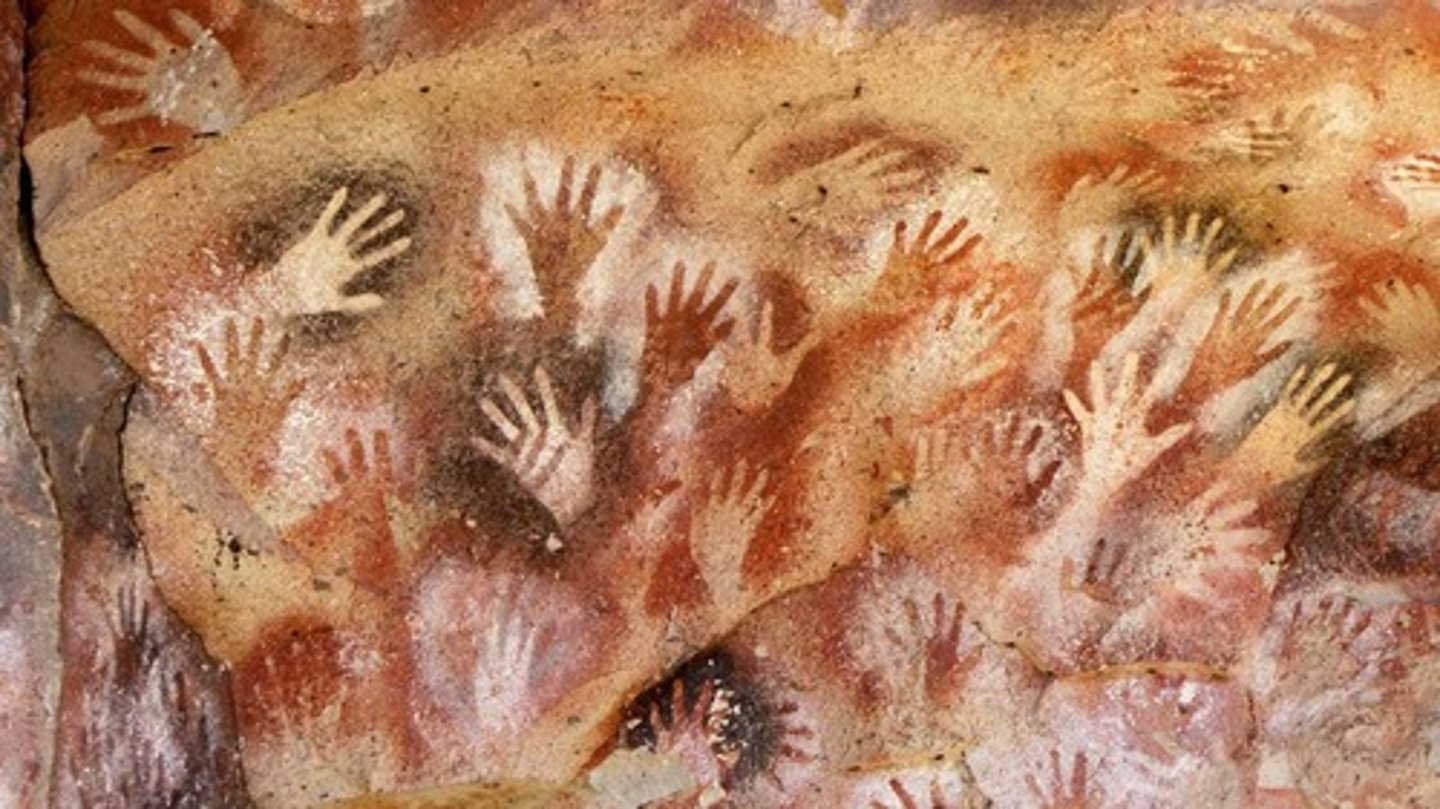
Prehistoric Cave Dwellers/Paleolithic/Stone Age Art (Characteristic 19)
Purpose: Art Movement characterized by having been made (most likely) as a way to mark tribal territory

Prehistoric Cave Dwellers/Paleolithic/Stone Age Art (Characteristic 20)
Purpose: Art Movement characterized by having been made (most likely) as a way to represent the culmination of sacred hunting rituals or spiritual journeys of some kind (but could also just be art for art's sake)

Prehistoric Cave Dwellers/Paleolithic/Stone Age Art (Characteristic 21)
Art Movement characterized by certain geometric shapes and signs that are geographically isolated suggesting that such symbols represented something more specific than communication, perhaps symbolizing a clan or tribe of that area
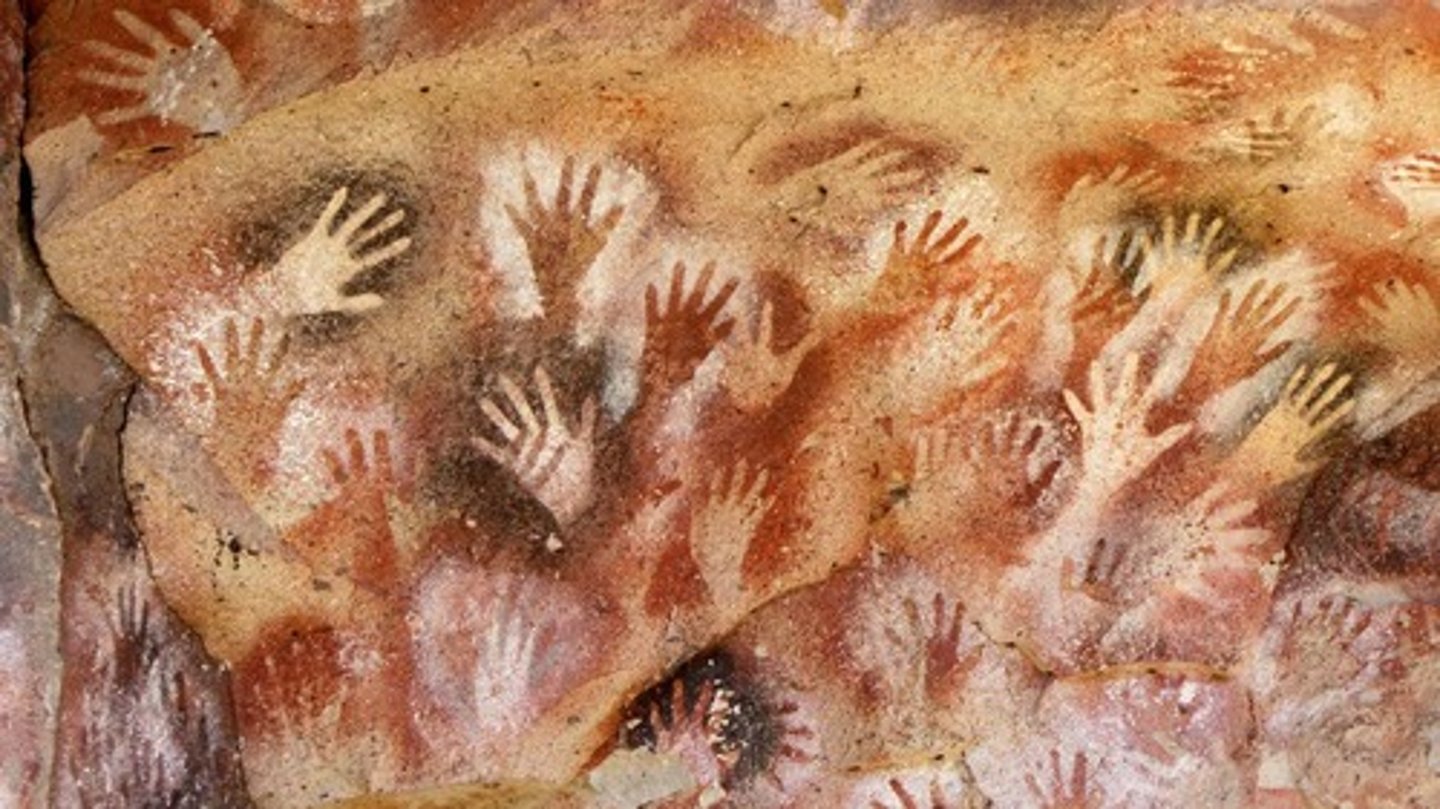
Prehistoric Cave Dwellers/Paleolithic/Stone Age Art (Characteristic 22)
Art Movement characterized by certain geometric shapes and signs that may have represented counting marks to keep track of days or to keep records and/or stylized representations of the world around them such as depictions of weaponry, housing, celestial objects, landscape features, mountains, etc.

Prehistoric Cave Dwellers/Paleolithic/Stone Age Art (Characteristic 23)
Art Movement characterized by certain geometric shapes and signs that are largely, if not solely, responsible for the human invention of graphic communication
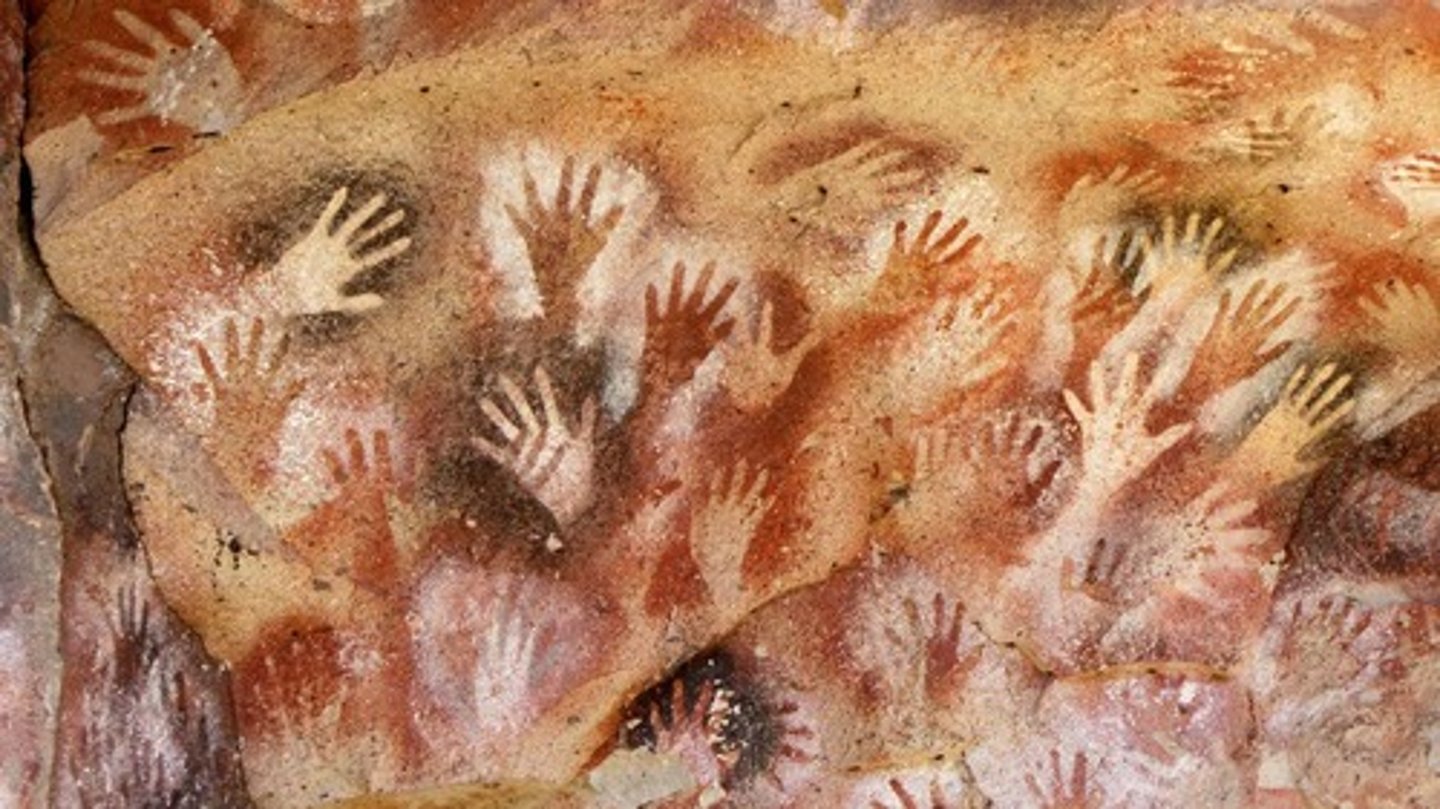
Prehistoric Cave Dwellers/Paleolithic/Old Stone Age Art (Technique) [Fact 1]
Art Movement in which paintings were first designed and then engraved into soft rock using their hands and/or small tools such as moss pads, twigs, bones, and hairs
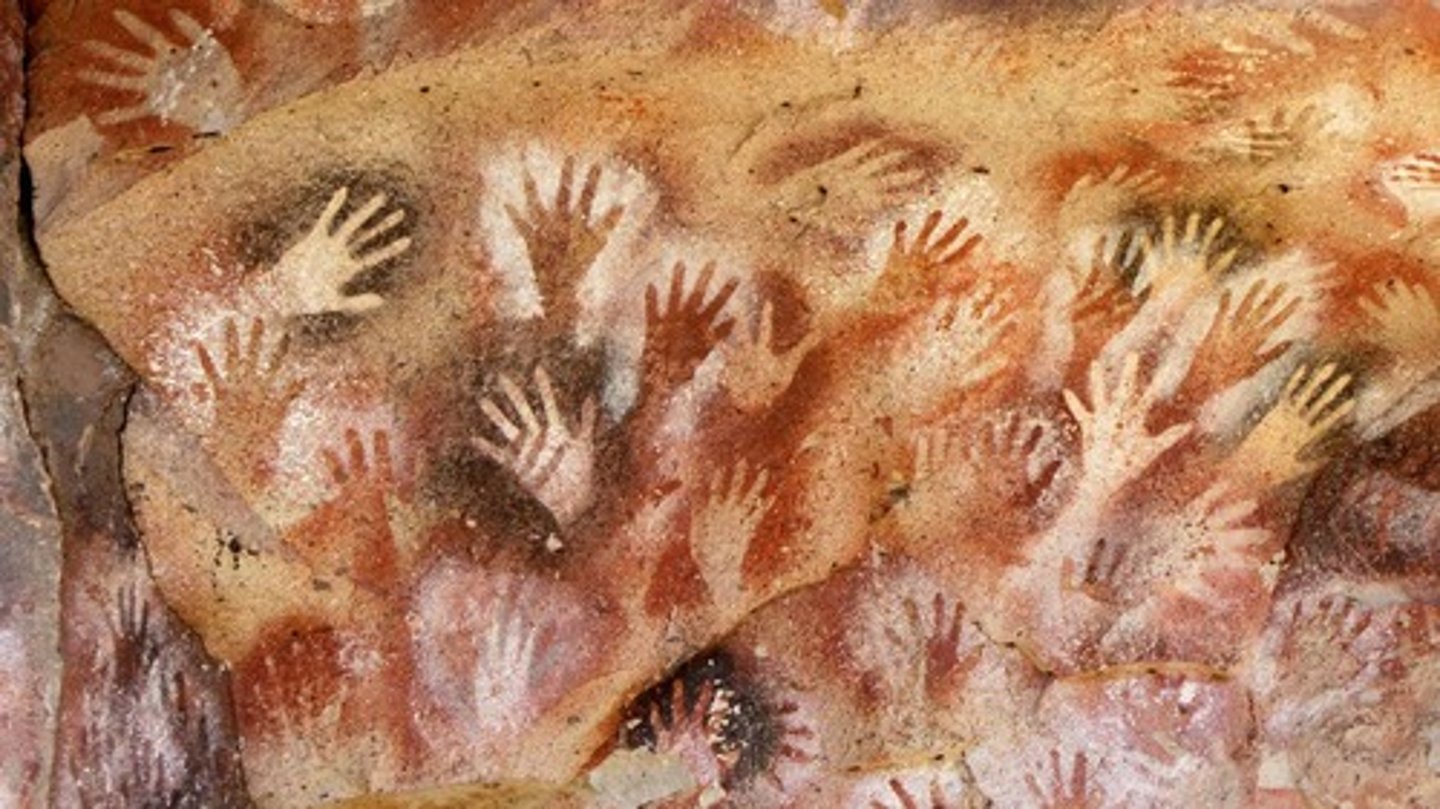
Prehistoric Cave Dwellers/Paleolithic/Old Stone Age Art (Technique) [Fact 2]
and then afterwards were sprayed on cave walls by using a hollowed-out reed of animal bone that created thin lines of paint that were blown onto the cave walls
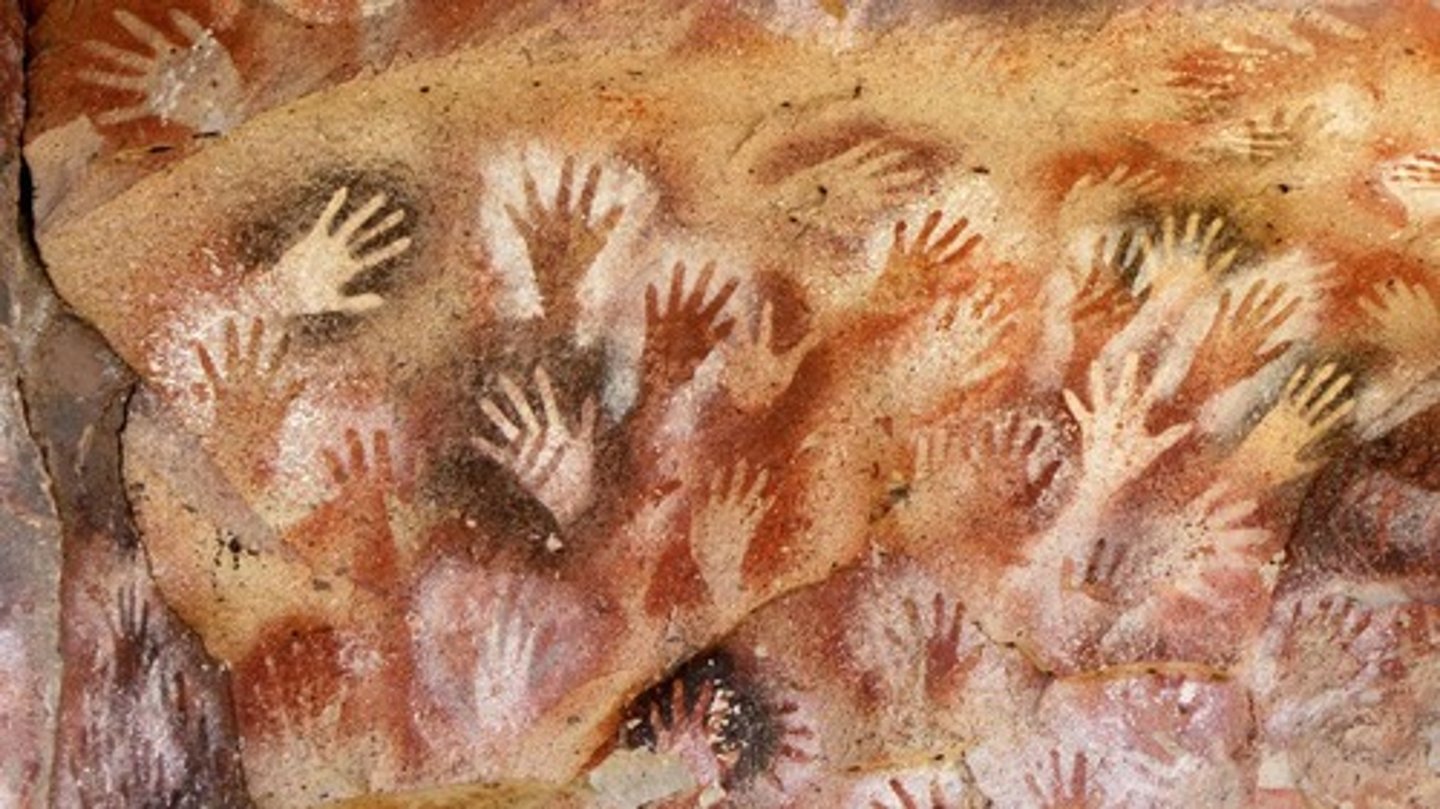
Prehistoric Cave Dwellers/Paleolithic/Old Stone Age Art (Technique) [Fact 3]
Art Movement in which paintings were colorized by artists using Ochre, a natural mineral that could be crushed to a powder that could give pigments the colors of (mostly) red and also yellow and brown

Prehistoric Cave Dwellers/Paleolithic/Old Stone Age Art (Technique) [Fact 4]
Art Movement in which paintings were colorized by artists (most likely) using powdered charcoal in order to give a black color to their works

Prehistoric Cave Dwellers/Paleolithic/Old Stone Age Art (Technique) [Fact 5]
Art Movement in which paintings were colorized with paints or pigments made from mixing various minerals, portions of animal bone, clay, charcoal, ochre, and other natural elements and (most likely) used animal fat, water, saliva, and/or blood as the mixing medium for the paints

Prehistoric Cave Dwellers/Paleolithic/Old Stone Age Art (Technique) [Fact 6]
Art Movement in which paintings were given color by applying pigments to them, which could be done in two ways, one of which was by rubbing the powered pigments onto the walls with their bare hands (which produces a tone similar to that of pastels and painting with pastels)

Prehistoric Cave Dwellers/Paleolithic/Old Stone Age Art (Technique) [Fact 7]
Art Movement in which paintings were given color by applying pigments to them, which could be done in two ways, one of which was by mixing the powdered pigment with some form of "binding fluid" such as animal fat and applying it to the wall with crude reeds or "bristle (animal hair) brushes"

Prehistoric Cave Dwellers/Paleolithic/Stone Age Art (Fact A)
Art Movement in which first true artistic traditions emerge in the last 20,000 years or so with cave decoration occurring around 10,000 years ago with key areas of life being portrayed with a realism and skill previously unheard of
Prehistoric Cave Dwellers/Paleolithic/Stone Age Art (Fact B)
Art Movement in which its artists analyzed their environment, carefully observing its physical details in which they simply recorded what they see; so their work is both symbolical and figurative
Prehistoric Cave Dwellers/Paleolithic/Stone Age Art (Fact C)
Art Movement in which its artists rarely depicted people and when they did, they were nearly always female
Stationary Prehistoric Cave Dwellers/Paleolithic/Old Stone Age Art (Fact 1)
Classification of Old Stone Age Art which includes Western European Cave Paintings
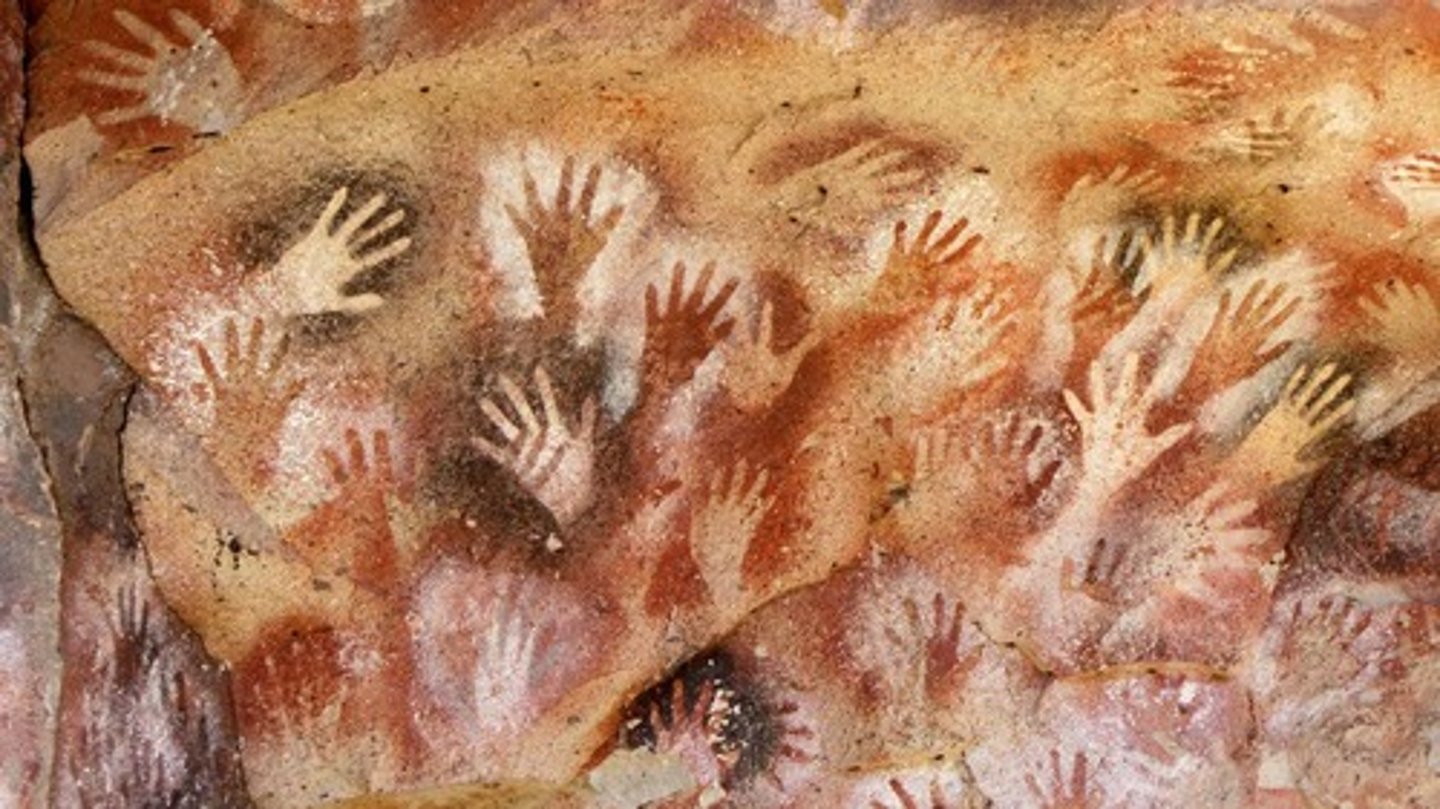
Portable Prehistoric Cave Dwellers/Paleolithic/Old Stone Age Art (Fact 1)
Classification of Old Stone Age Art which includes portable, simple, and functional items such as small female figurines as well as clay pots and/or bowls
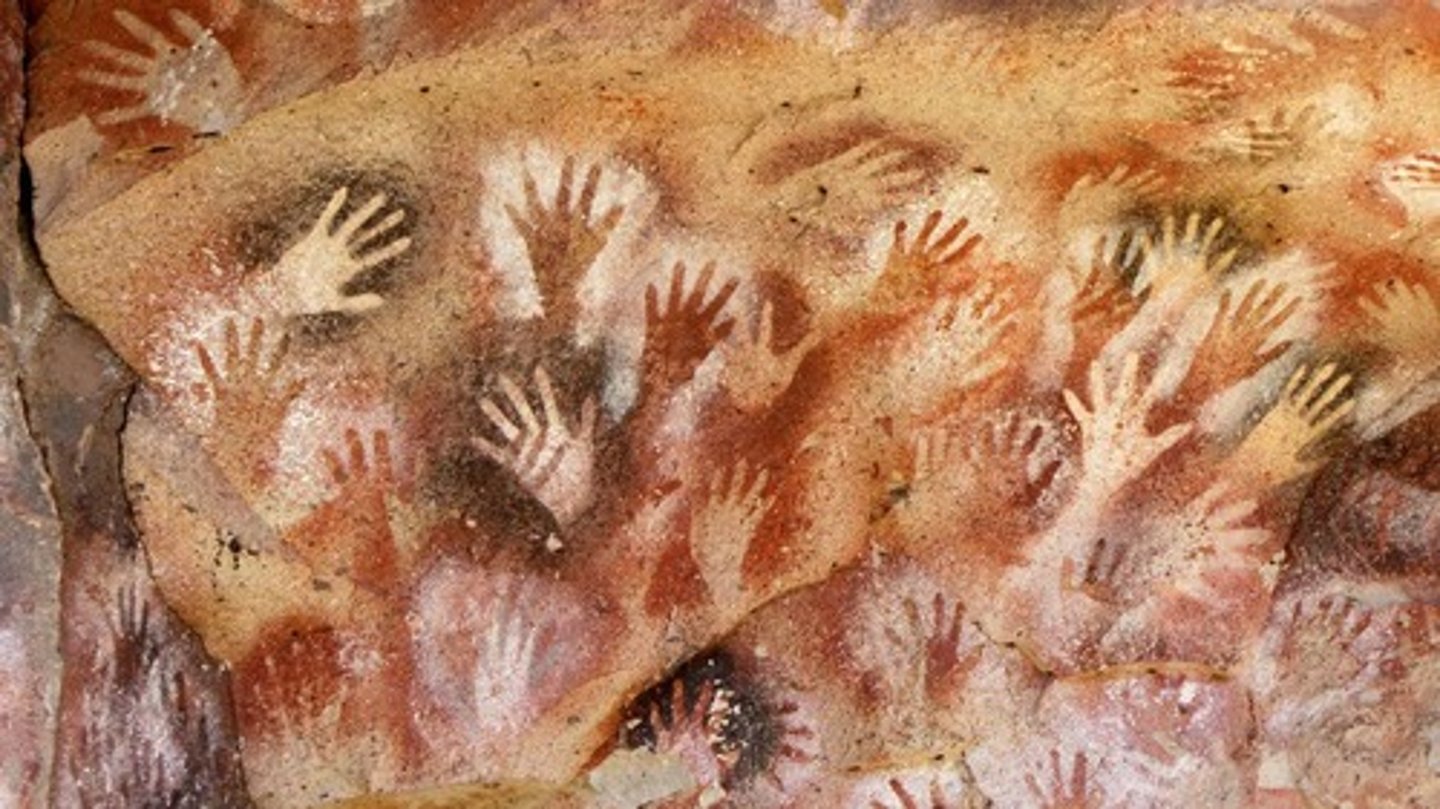
Geometric Signs of Prehistoric Cave Dwellers/Paleolithic/Old Stone Age Art (Fact 1)
It was (most likely) the first system of graphical communication - because of the repetition of these same signs for so long and at so many sites, the artists that made works with them must have been making intentional choices in making these shapes that must have had specific, culturally recognized, agreed-upon meanings; thus exemplifying (one of) the oldest systems of graphic communication in the world

Lascaux Cave Paintings (Fact 1)
600 Cave Paintings in the namesake town of France depicting various brightly-colored animals - all depicted in various colors including black, brown, red, and yellow

Lascaux Cave Paintings (Fact 2)
Caves accidentally discovered by 4 friends and their dog in the 1950's in the namesake town of France

Lascaux Cave Paintings (Fact 3)
The actual caves are cut off from the public and an adjacent replica of them has been made for public touring due to the atmospheric interactions people had with the paintings that affected the ancient art more in 15 years than throughout the 15,000 years it was there
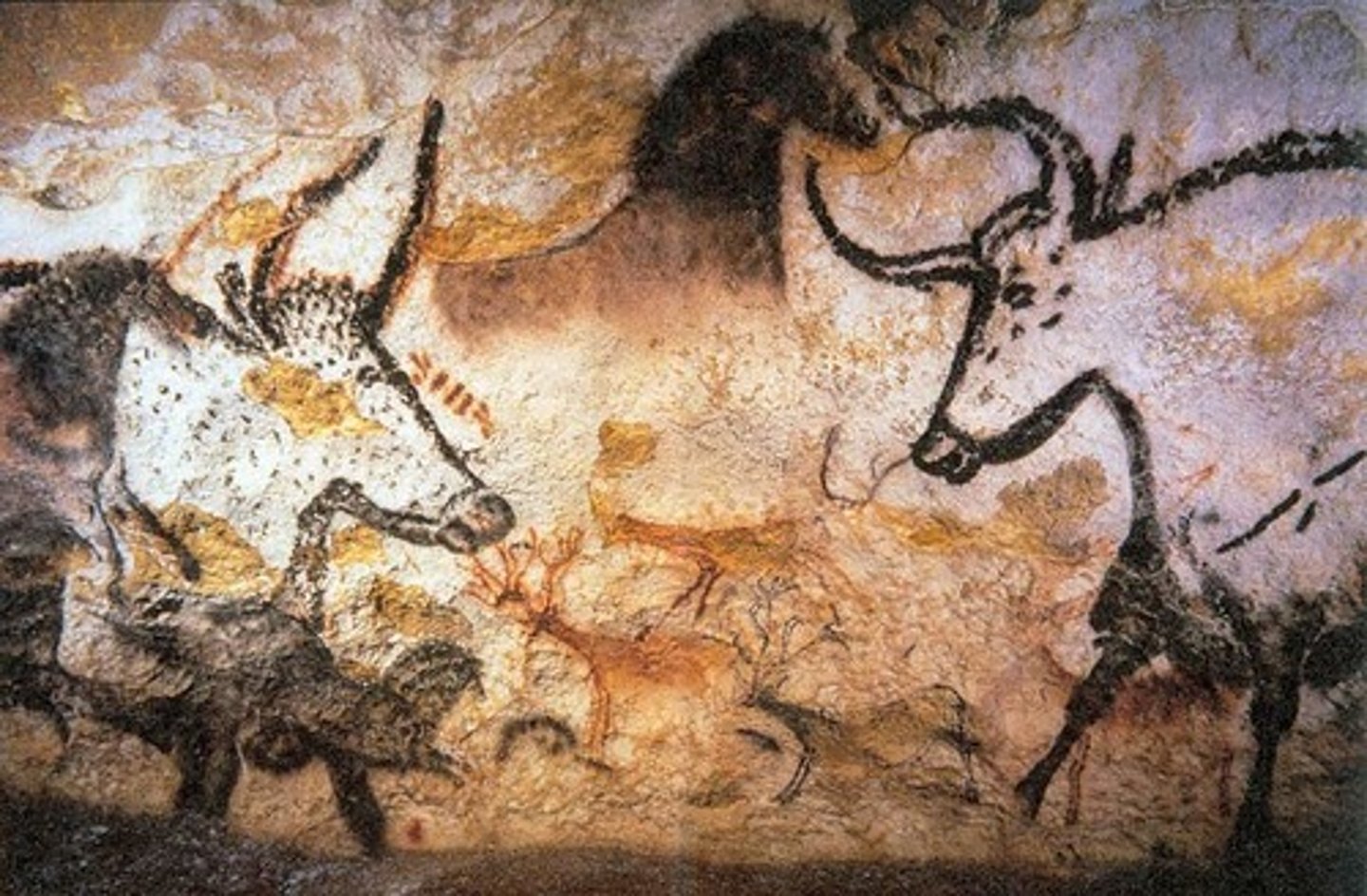
Lascaux Bison (Fact 1)
15,000 BCE - 10,000 BCE
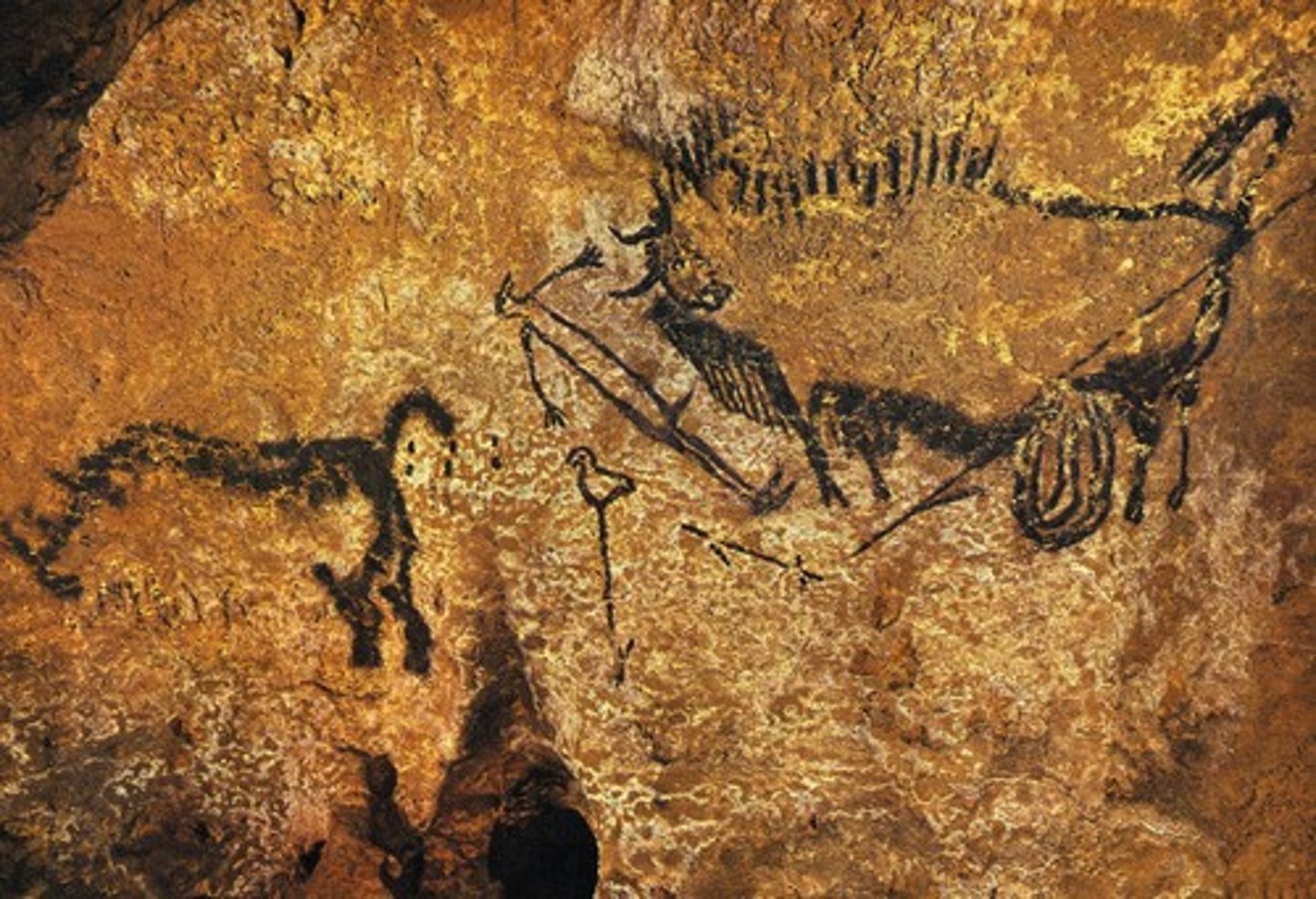
Serra Da Capivara Cave Paintings (Fact 1)
Cave Paintings in the namesake city of Brazil depicting humans and animals dancing, they are all depicted in red
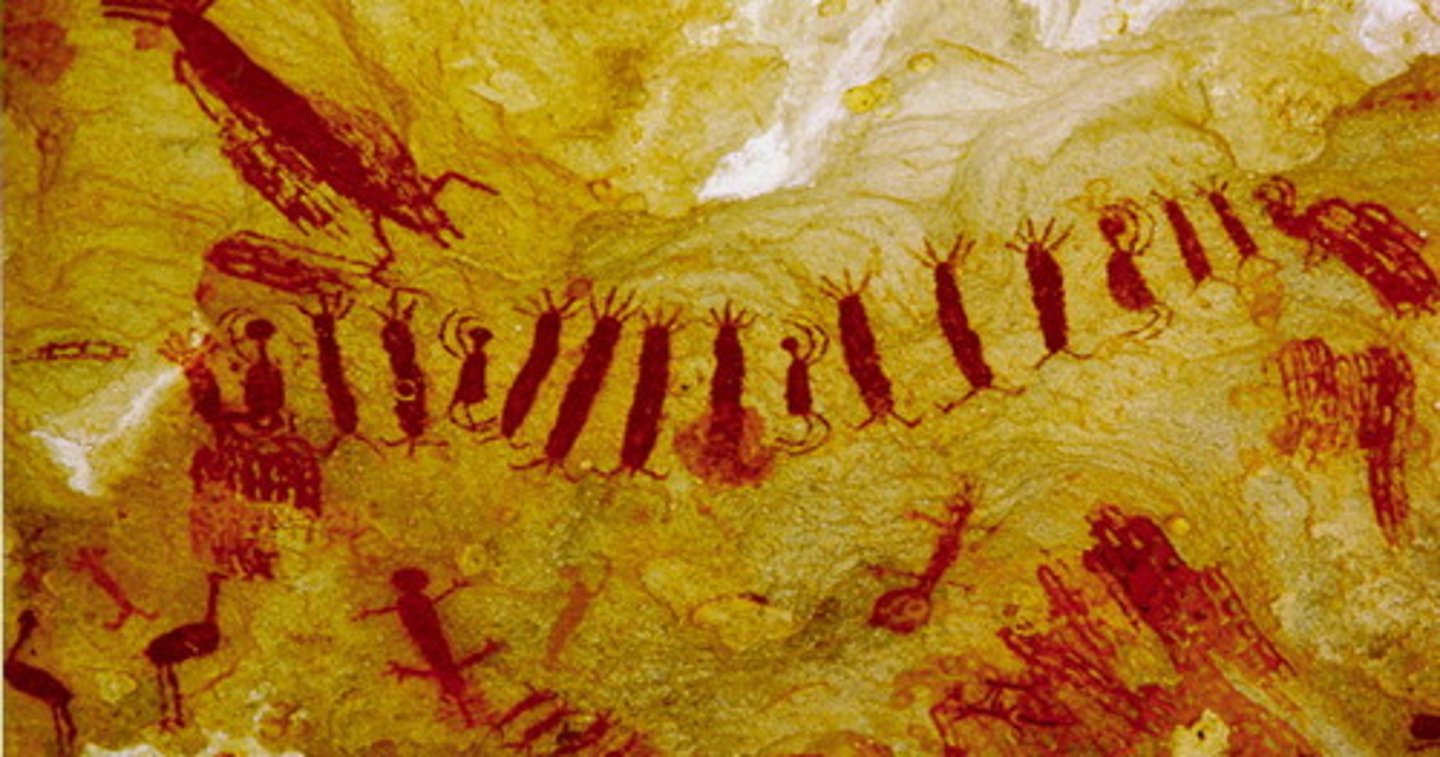
Acacus Mountain Paintings (Fact 1)
Cave Paintings in the namesake mountain range of western Libya
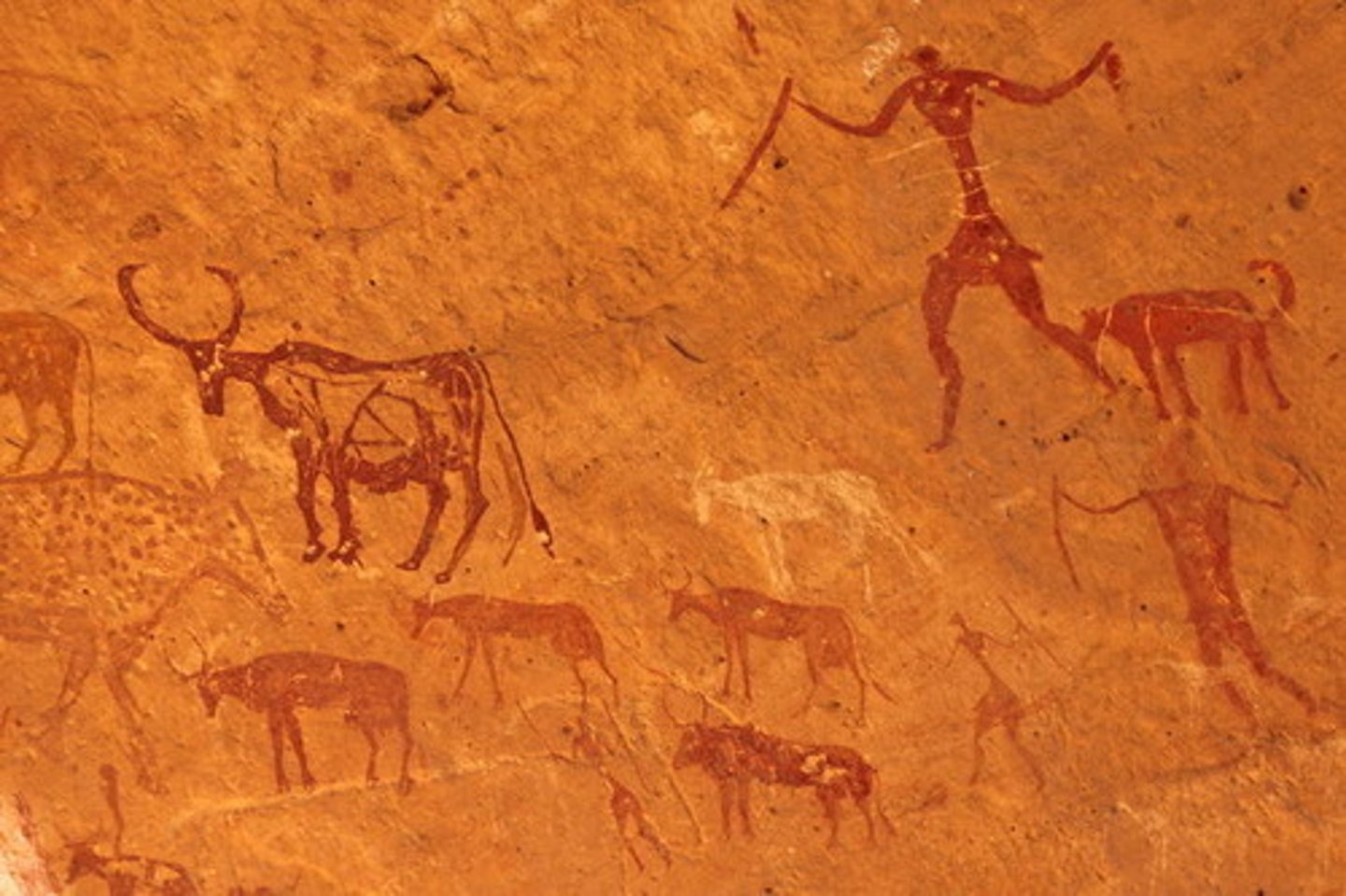
Altamira Bison (Fact 1)
15,000 BCE - 12,000 BCE
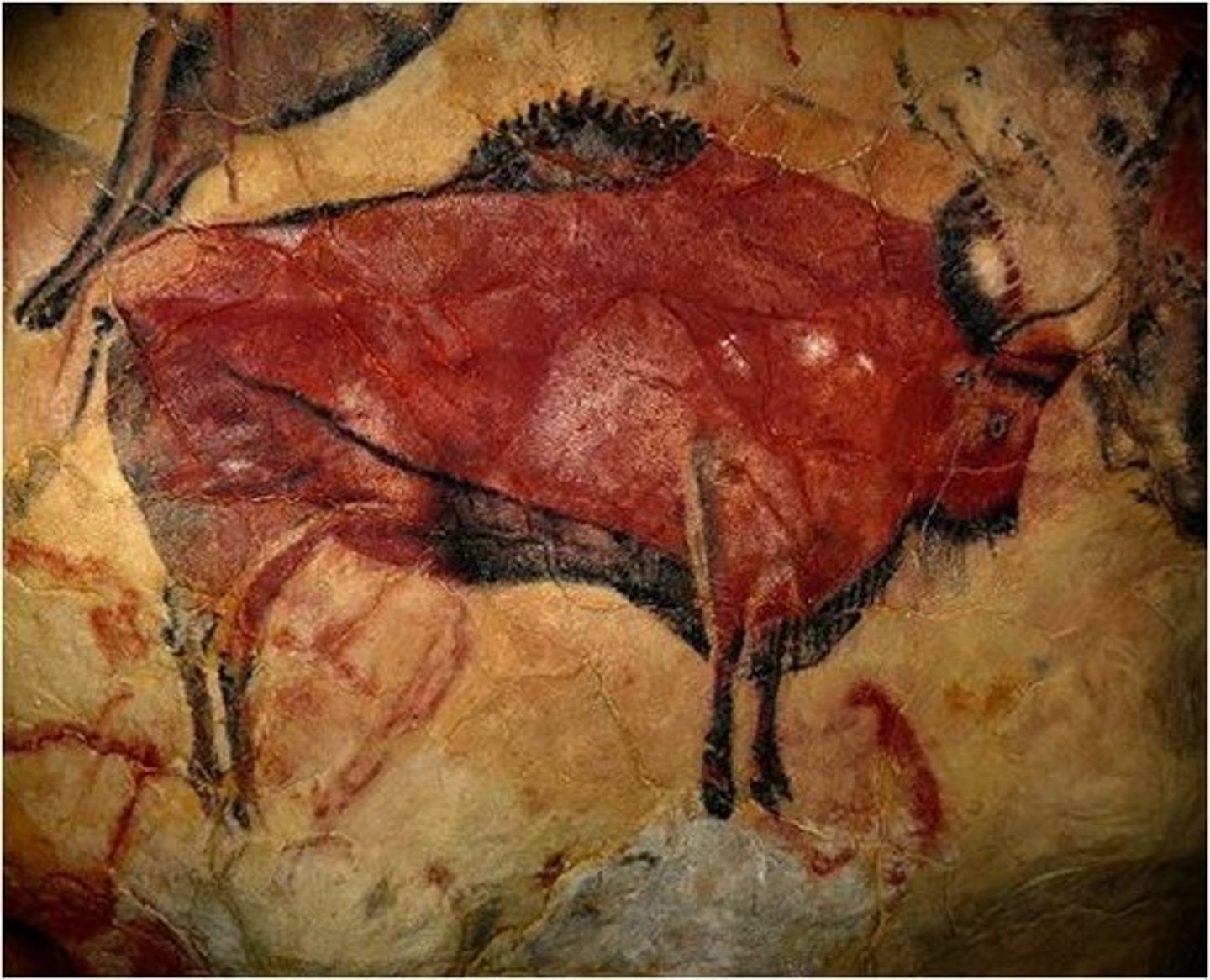
Grotta Dell'addaura (Fact 1)
Located in Sicily
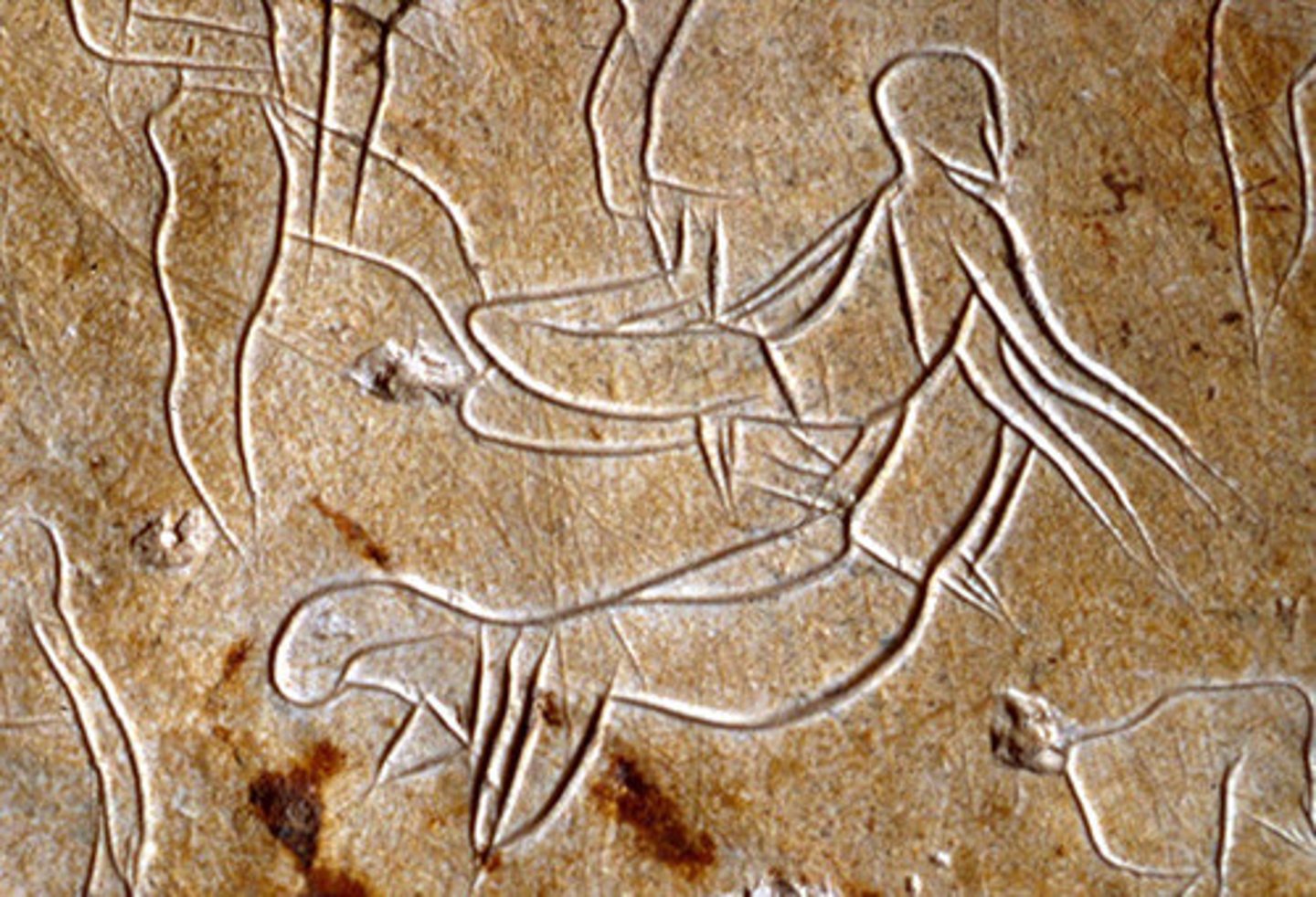
Zig Zags of Ojo Guarena Cave (Fact 1)
Located in Spain

Black Horse of Cullalvera Cave (Fact 1)
Located in Spain
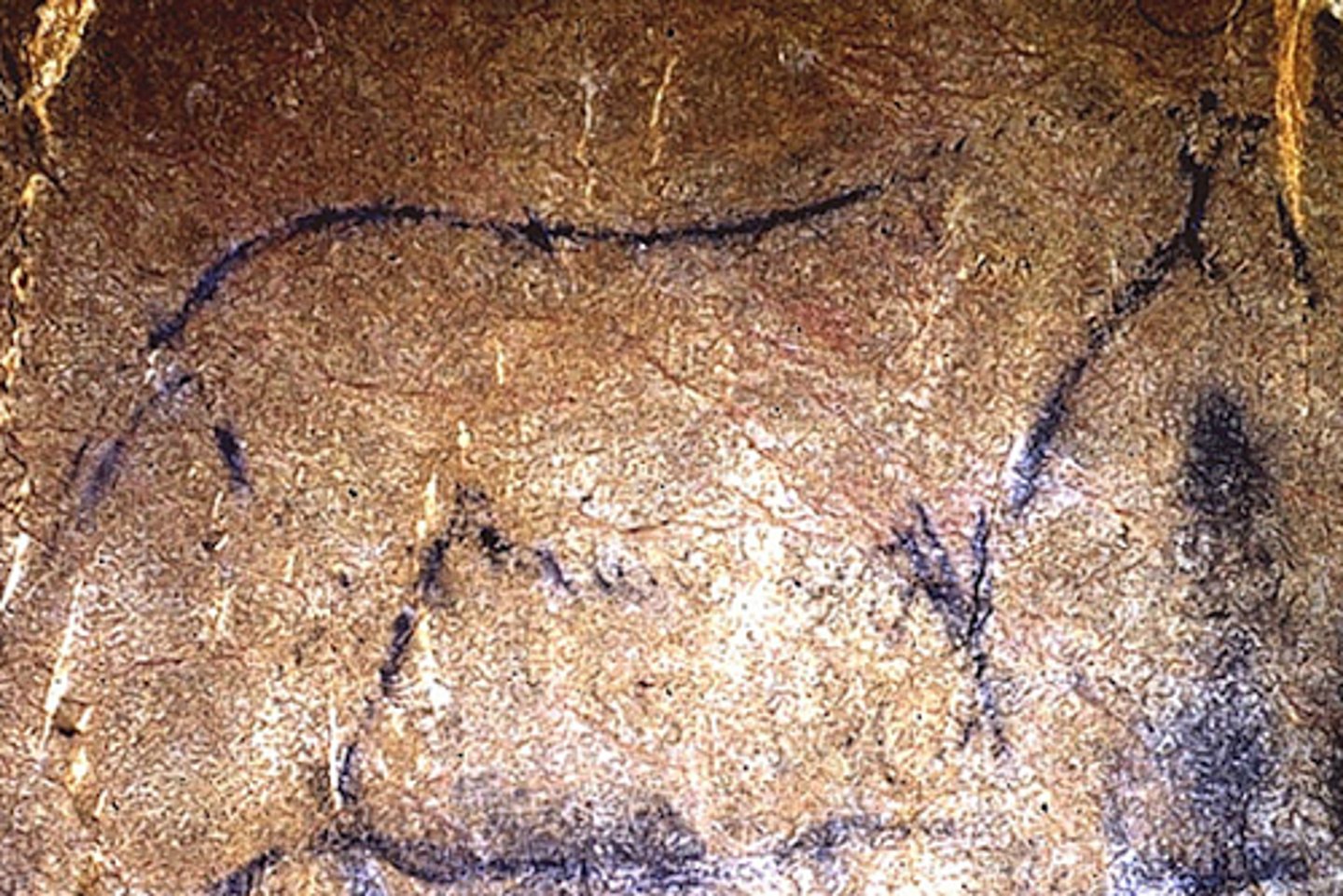
Purple Bison of La Pasiega Cave (Fact 1)
Located in Spain
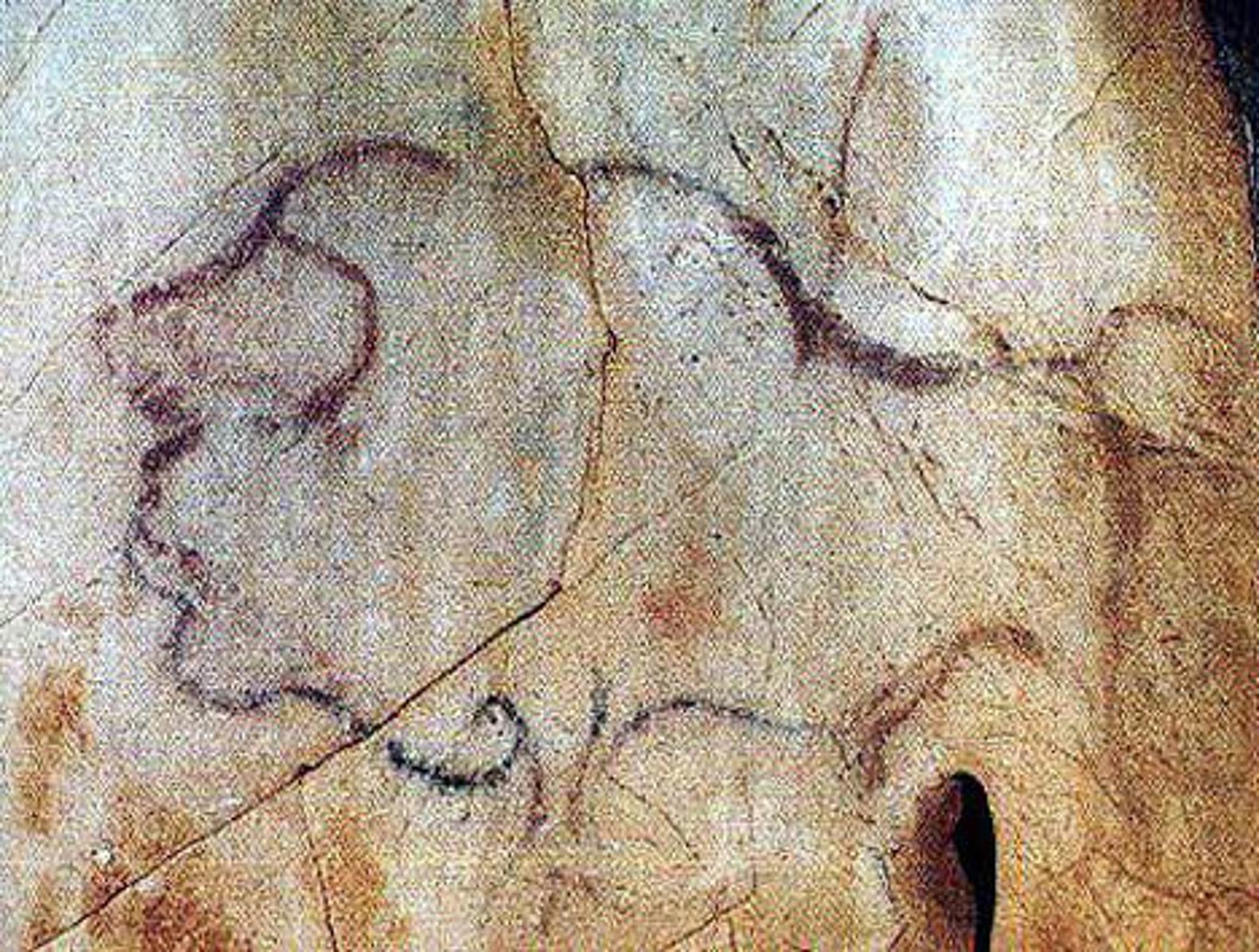
The "Inscription" of La Pasiega Cave (Fact 1)
Located in Spain, it seems to be a mixture of stylized depictions of the real world around the artists who made at the time and an early form of graphical communication

Geometric Sign (Bas-Relief) of La Roque Venasque (Fact 1)
Geometric Sign, Located in France
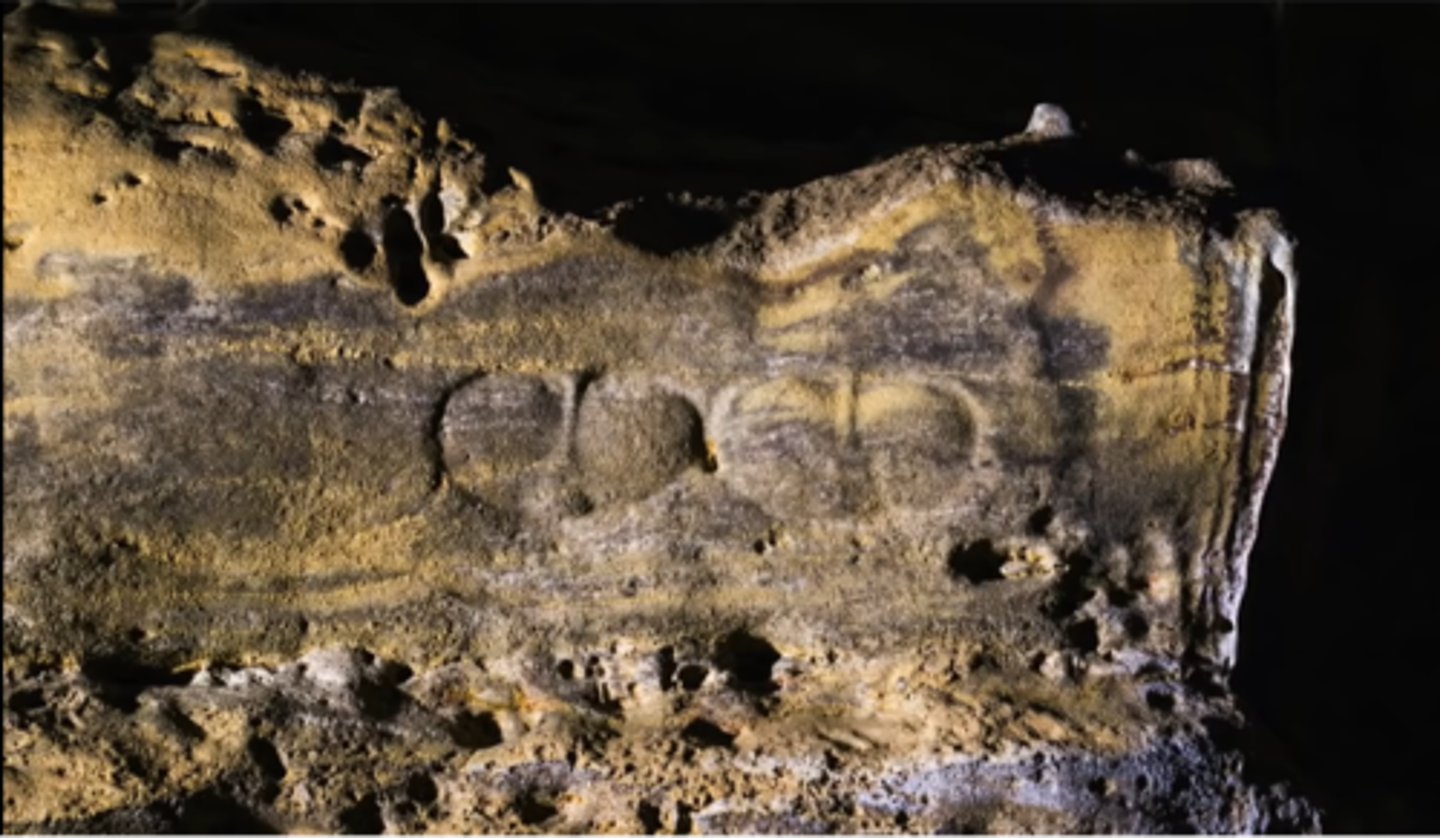
Geometric Sign of El Castillo Cave - Clan/Tribe Symbol (Fact 1)
Located in Spain
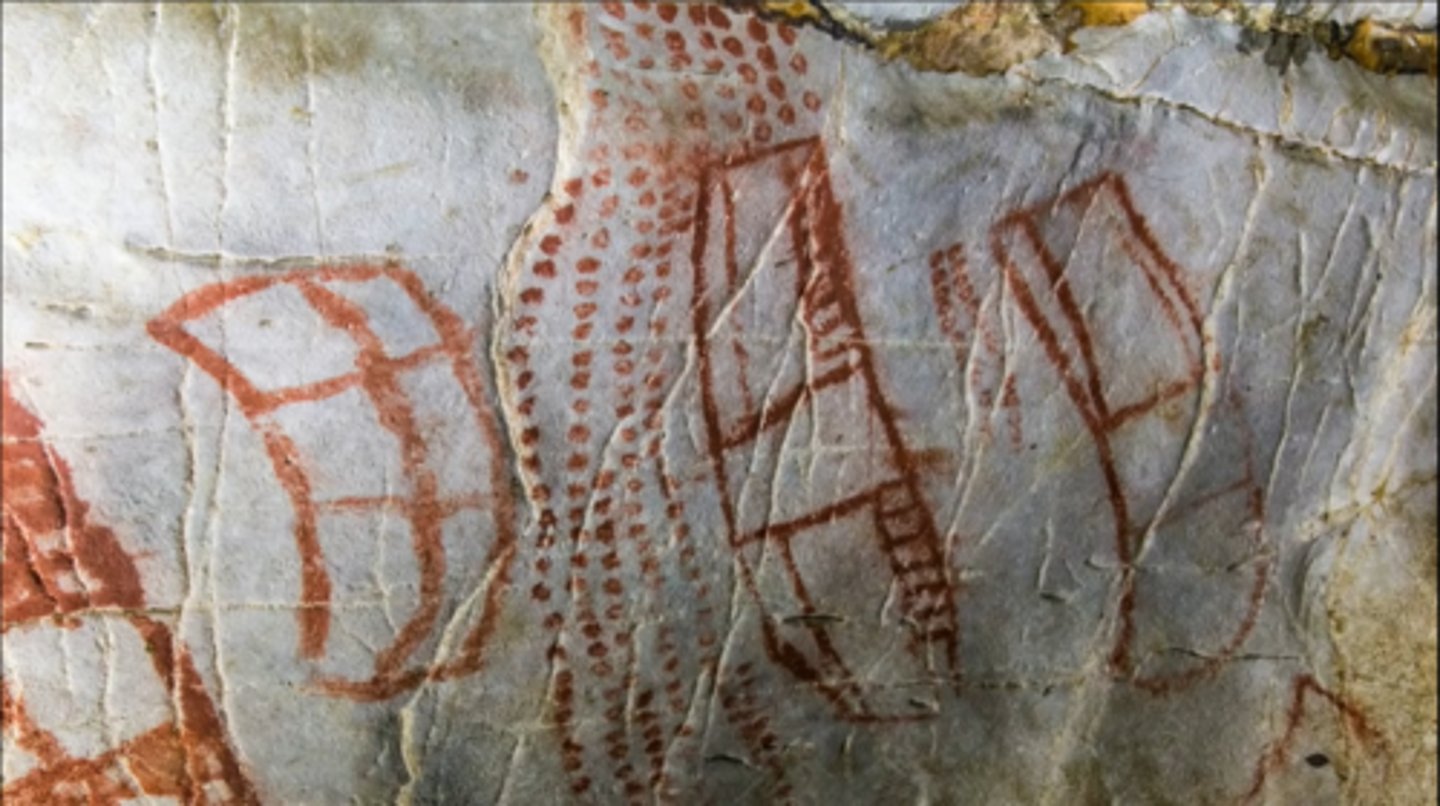
Geometric Sign of El Castillo Cave - Pentaform (Fact 1)
Located in Spain, the namesake object could represent or symbolize a word or simply just represent a tree

Geometric Sign of El Castillo Cave - Celestial Objects (Fact 1)
Located in Spain
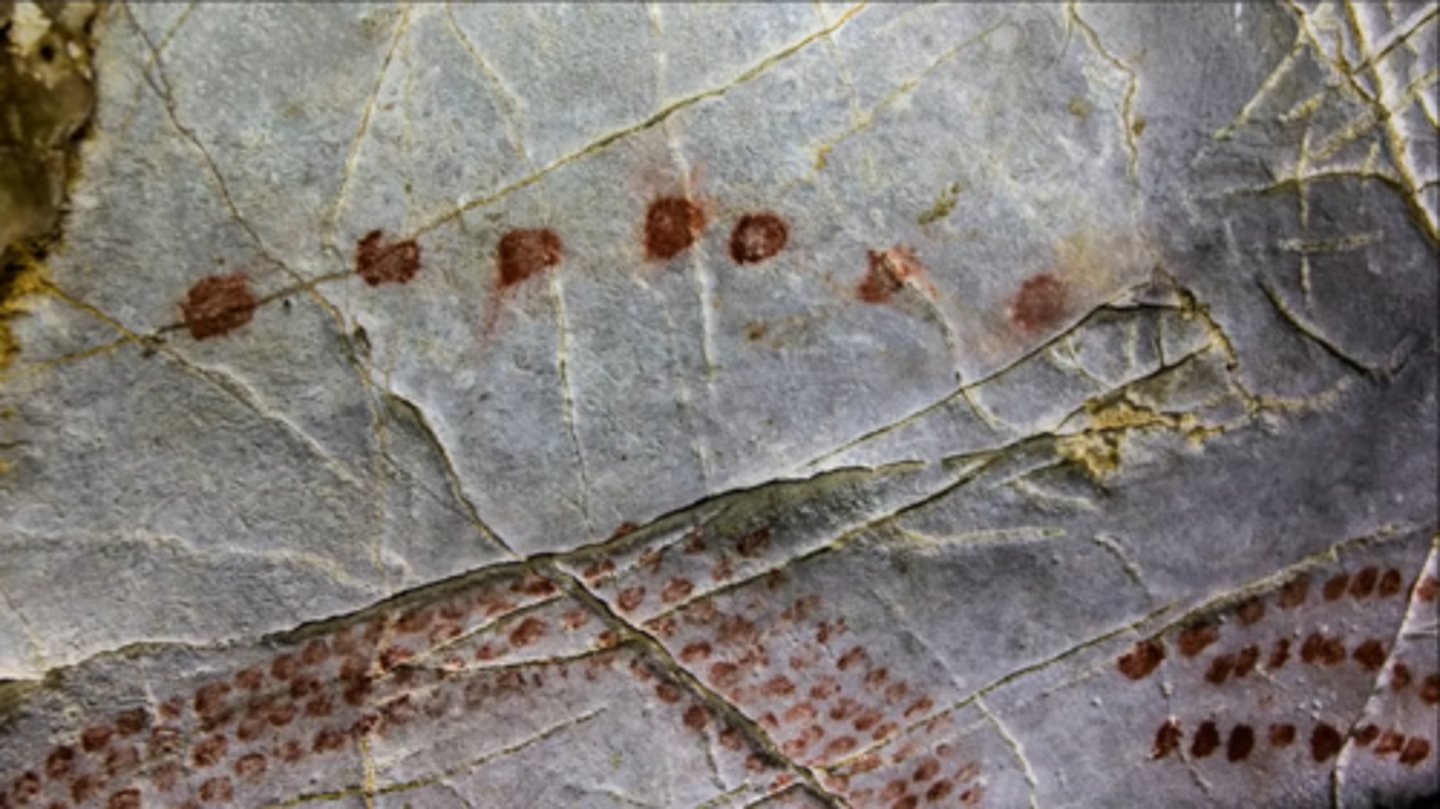
Hands of El Castillo Cave (Fact 1)
Located in Spain
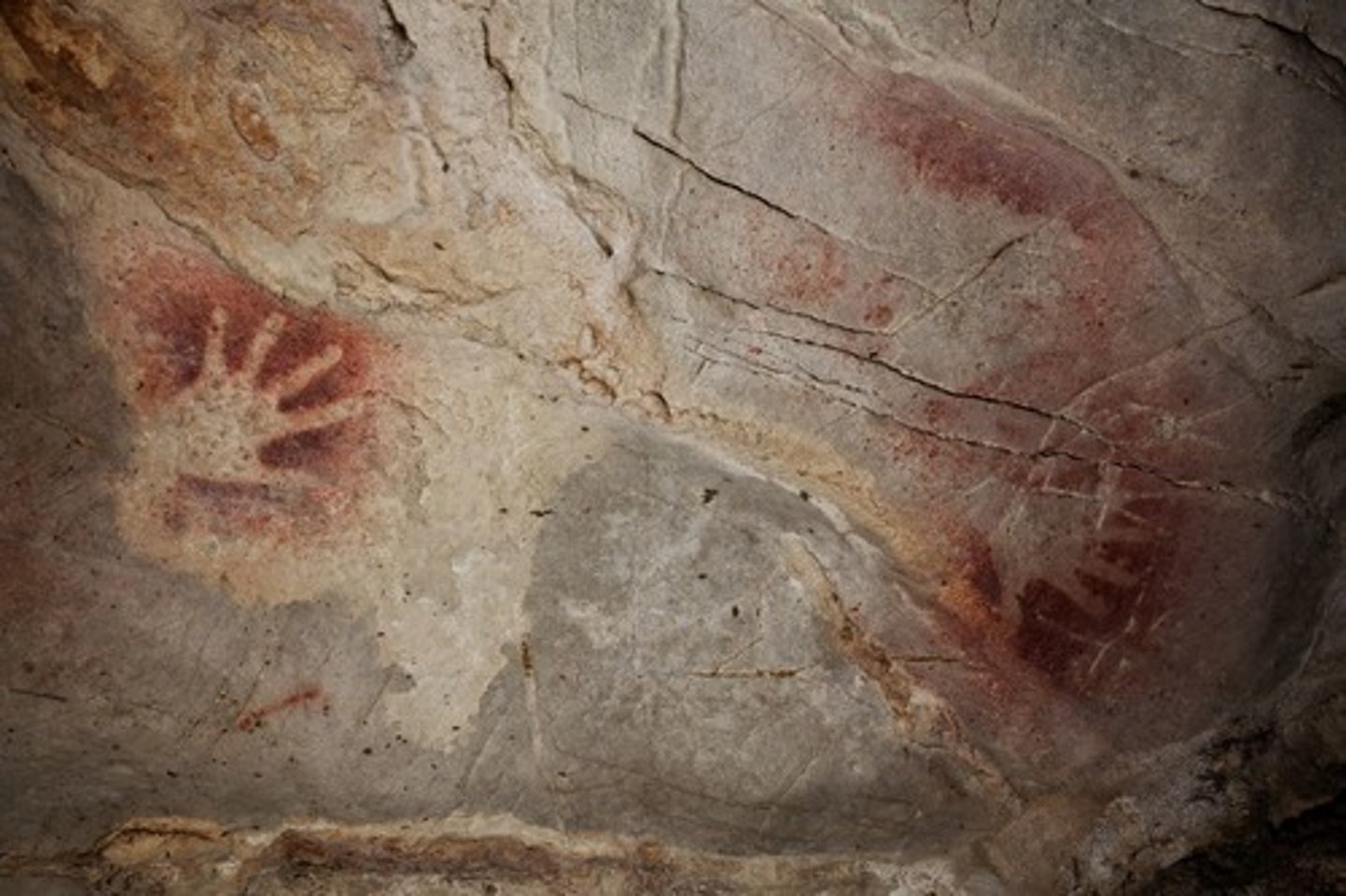
Geometric Sign of Riparo di Za Minic (Fact 1)
Located in Sicily

Geometric Sign of Pyrenees Mountains (Fact 1)
Located in France
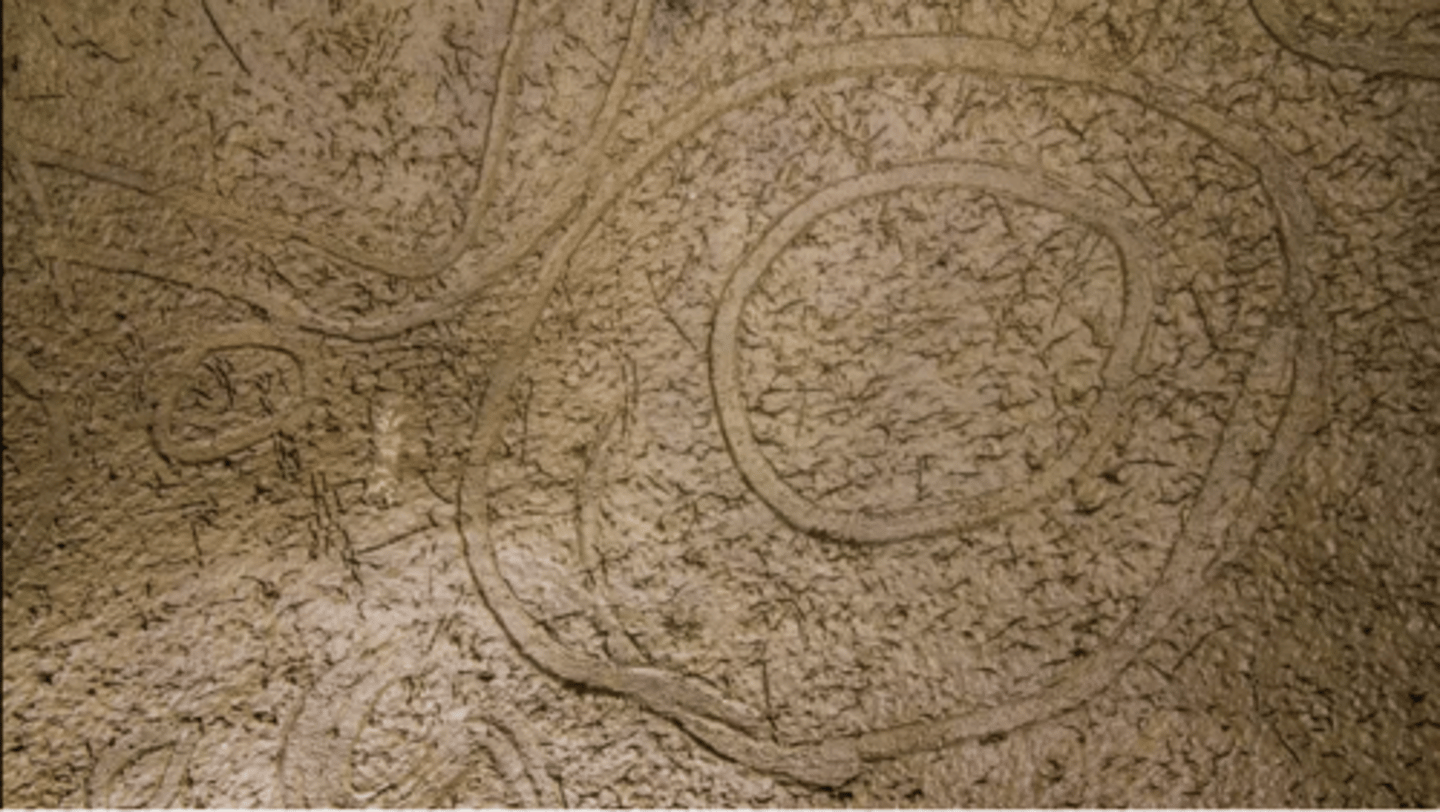
Geometric Sign of Dordogne - Tectiforms (Fact 1)
Located in France
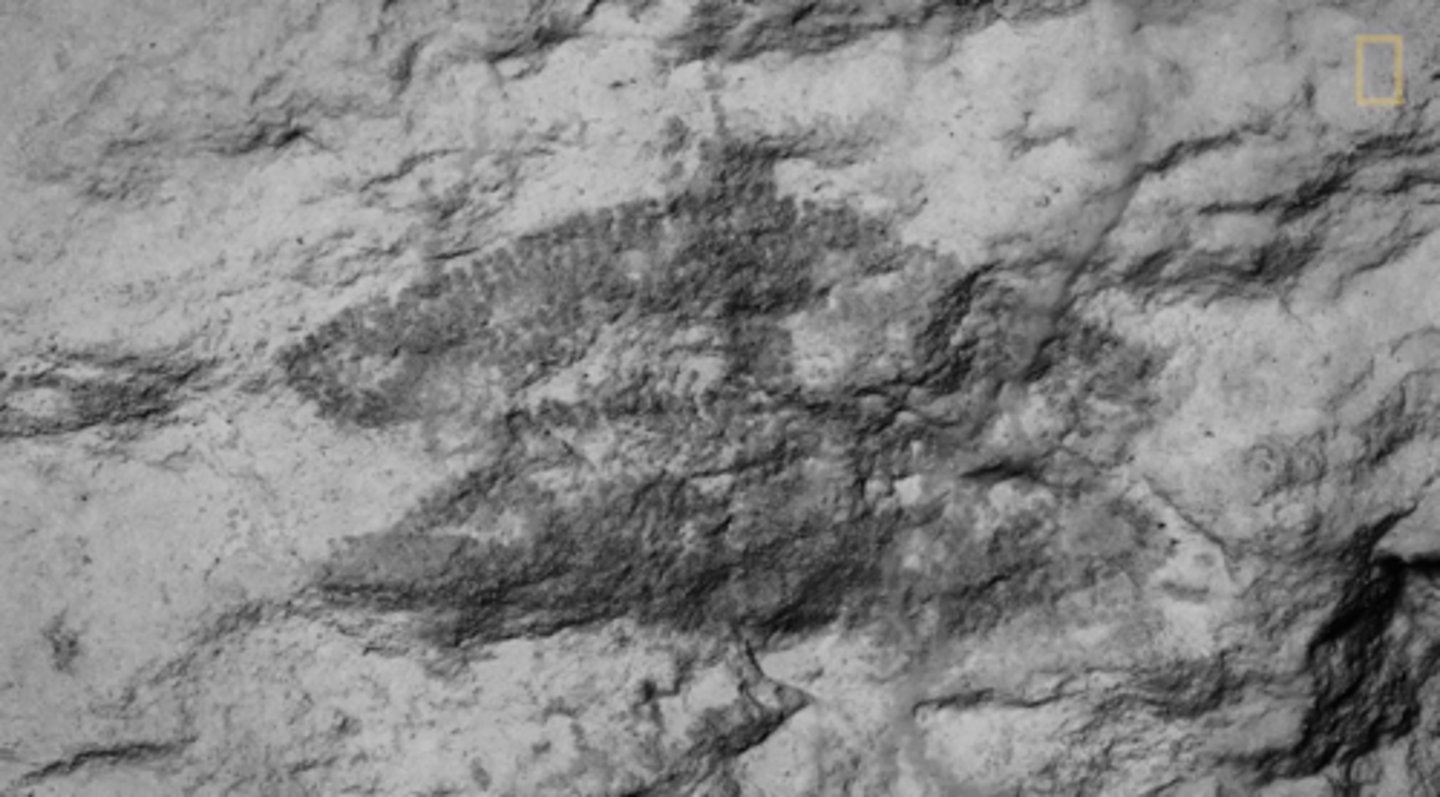
Lascaux Bull (Fact 1)
Located in France
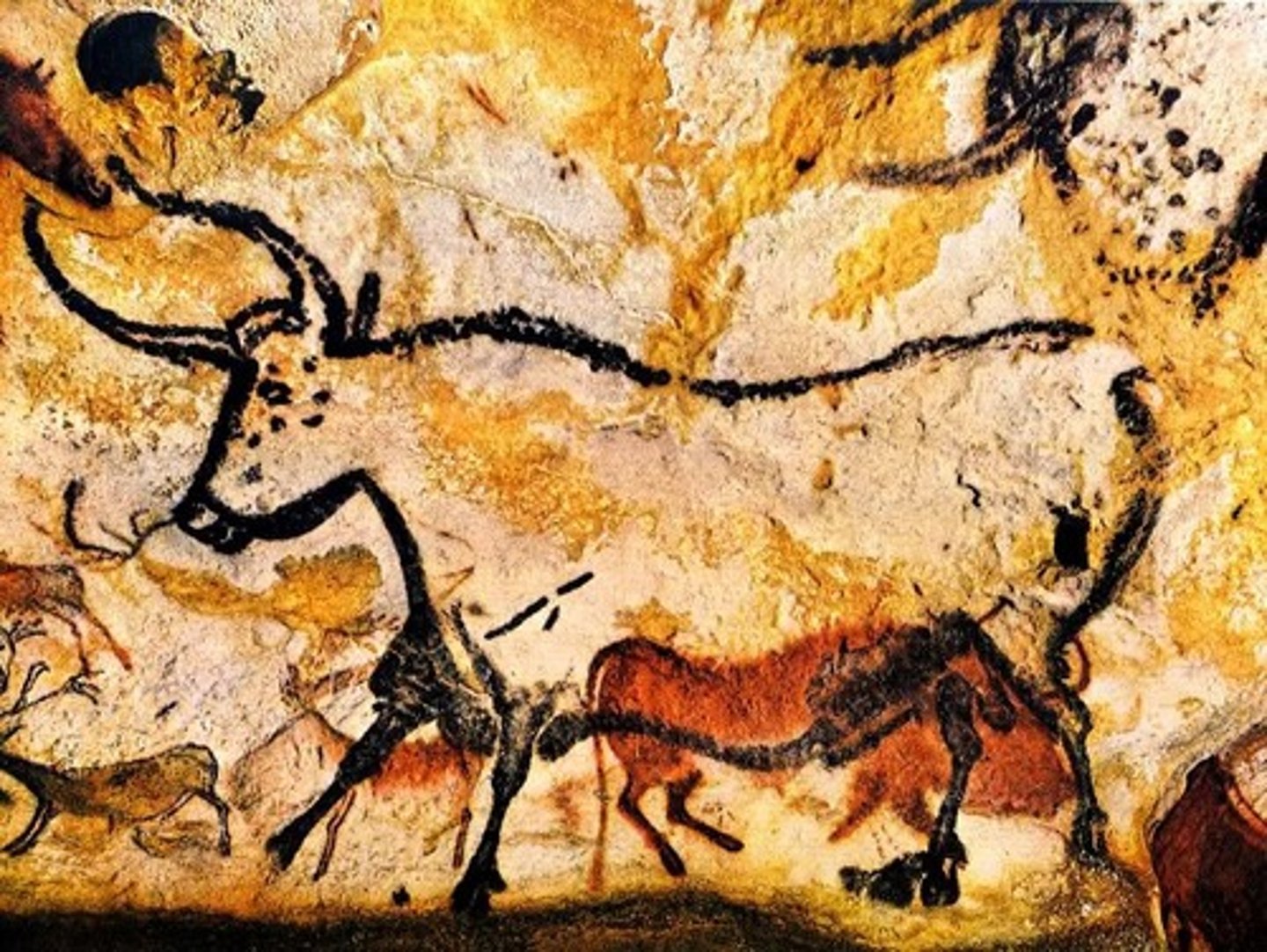
43,000 BP - 26,000 BP - The Aurignacians (Fact 0)
First prehistoric European (and possibly global) civilization to produce recognizable and distinguishable forms of art
43,000 BP - 26,000 BP - The Aurignacians (Fact 1)
First prehistoric European (and possibly global) civilization to produce recognizable and distinguishable forms of cave art including the Chauvet and Trois Freres Cave Paintings, the Aurignacian figurines
43,000 BP - 26,000 BP - The Aurignacians (Fact 2)
First prehistoric European (and possibly global) civilization to produce recognizable and distinguishable forms of figurative art and figurines including the Venus of Hohle Fels and the Lion Man
43,000 BP - 26,000 BP - The Aurignacians (Fact 3)
First prehistoric European (and possibly global) civilization to produce recognizable and distinguishable forms of decorative attire including pendants, bracelets, and ivory beads for body ornamentation
43,000 BP - 26,000 BP - The Aurignacians (Fact 4)
Subject: Civilization of artists characterized by subjects and themes associated with the animals of their time including Mammoths, Tarpans, and contemporarily-extinct subspecies of Rhinos
43,000 BP - 26,000 BP - The Aurignacians (Fact 5)
Subject: Civilization of artists characterized by subjects and themes associated with fertility, indicative of the emphasis of a woman's hips, breasts, and other body parts and lack of feet and arms as Venus figurines, the first ever
Lion Man of the Hohlenstein Stadel (Fact 1)
Located in Germany, it is an Aurignacian figurine and is the oldest known animal-oriented figurine of the Aurignacians and of all of prehistory

Venus of Hohle Fels (Fact 1)
Located in Germany, it is an Aurignacian figurine and is the oldest known human-oriented or figurine of the Aurignacians and of all of prehistory
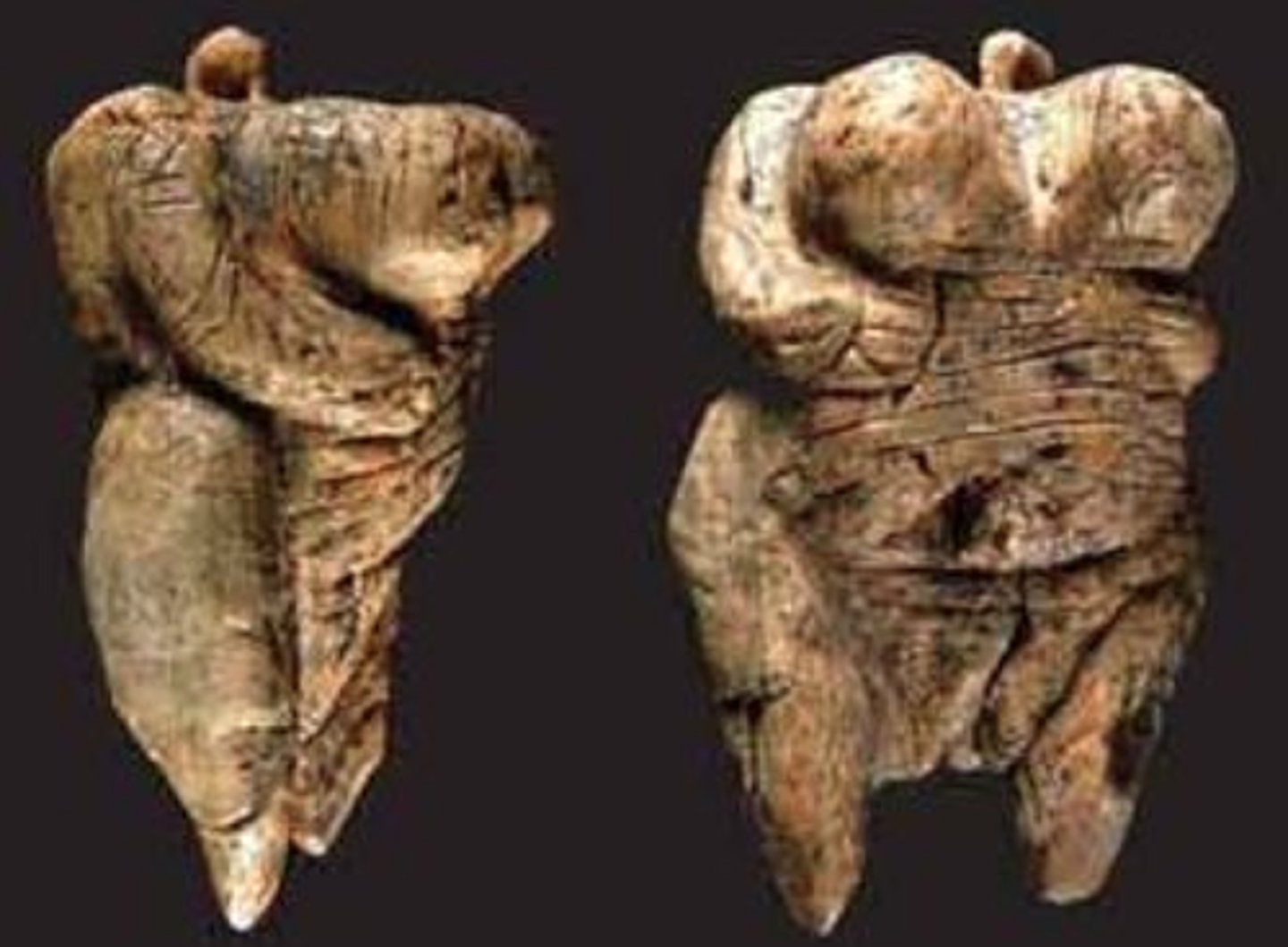
Venus of Hohle Fels (Fact 2)
Was (most likely) worn as a necklace piece
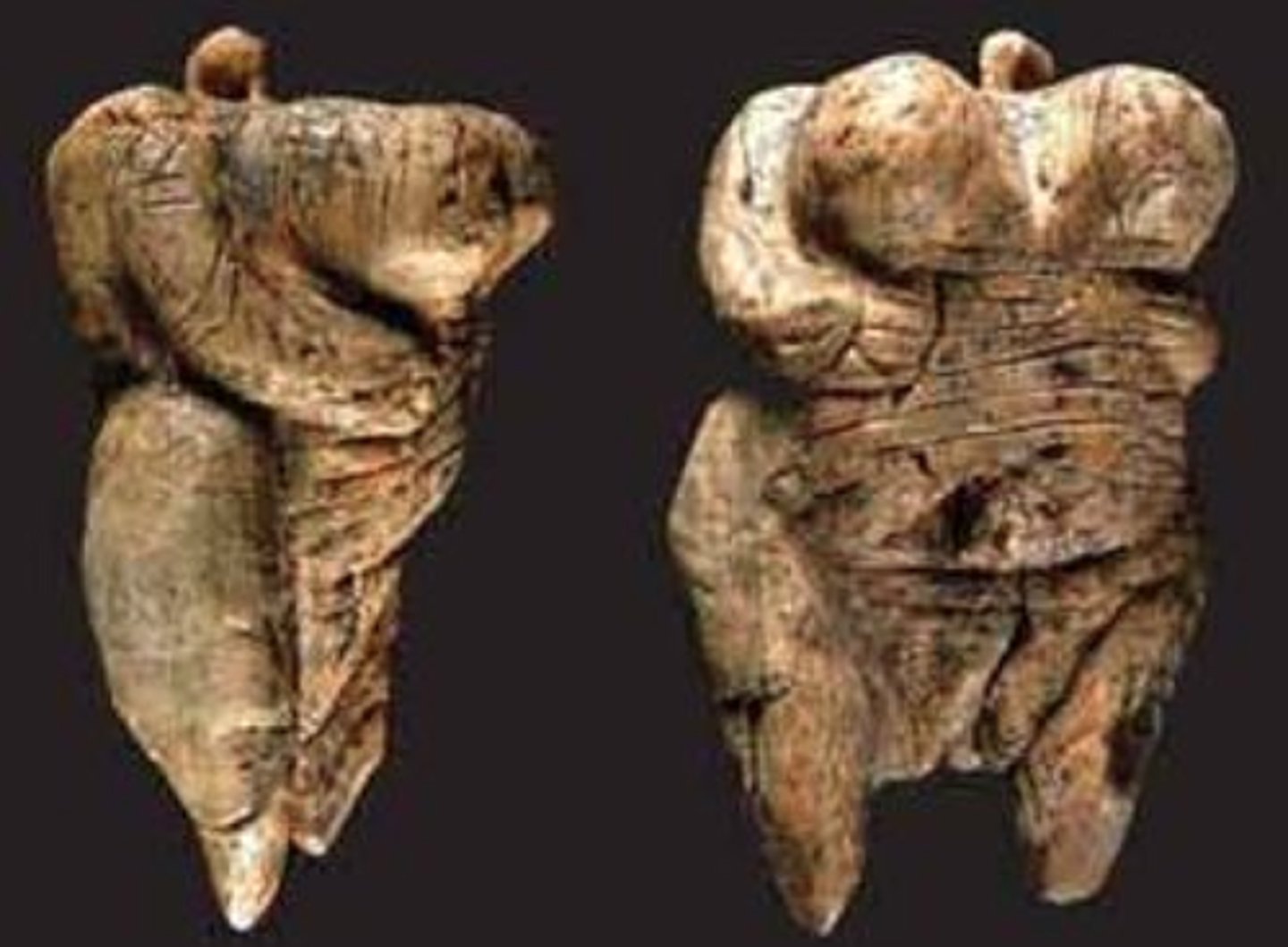
33 KYA - 21 KYA - The Gravettians (Fact 1)
Subject: Civilization of artists characterized by subjects and themes associated with fertility, indicative of the emphasis of a woman's hips, breasts, and other body parts and lack of feet and arms as Venus figurines, the most prominent and producing an abundance of well over 100 of them
33 KYA - 21 KYA - The Gravettians (Fact 2)
Subject: Civilization of artists characterized by subjects and themes associated with fertility, indicative of the emphasis of a woman's hips, breasts, and other body parts and lack of feet and arms as Venus figurines including the Venus of Dolni Vestonice and Venus of Moravany
33 KYA - 21 KYA - The Gravettians (Fact 3)
Prehistoric European civilization known mostly for their Venus Figurines but who made a whole range of other art including numerous cave paintings and jewelry objects
33 KYA - 21 KYA - The Gravettians (Fact 4)
Prehistoric European civilization known for making decorations out of the incisors and canines of Arctic Foxes as well as the incisors and other parts of the skeletons of Red Foxes; and Mammoth bones and remains of Wolves were used for decoration as well
Venus of Moravany (Fact 1)
Located in Slovakia, it is a Gravettian figurine made of mammoth ivory tusk

Venus of Dolni Vestonice (Fact 1)
Located in the Czech Republic, it is a Gravettian figurine and is the oldest known ceramic piece of the Gravettians and of all of prehistory
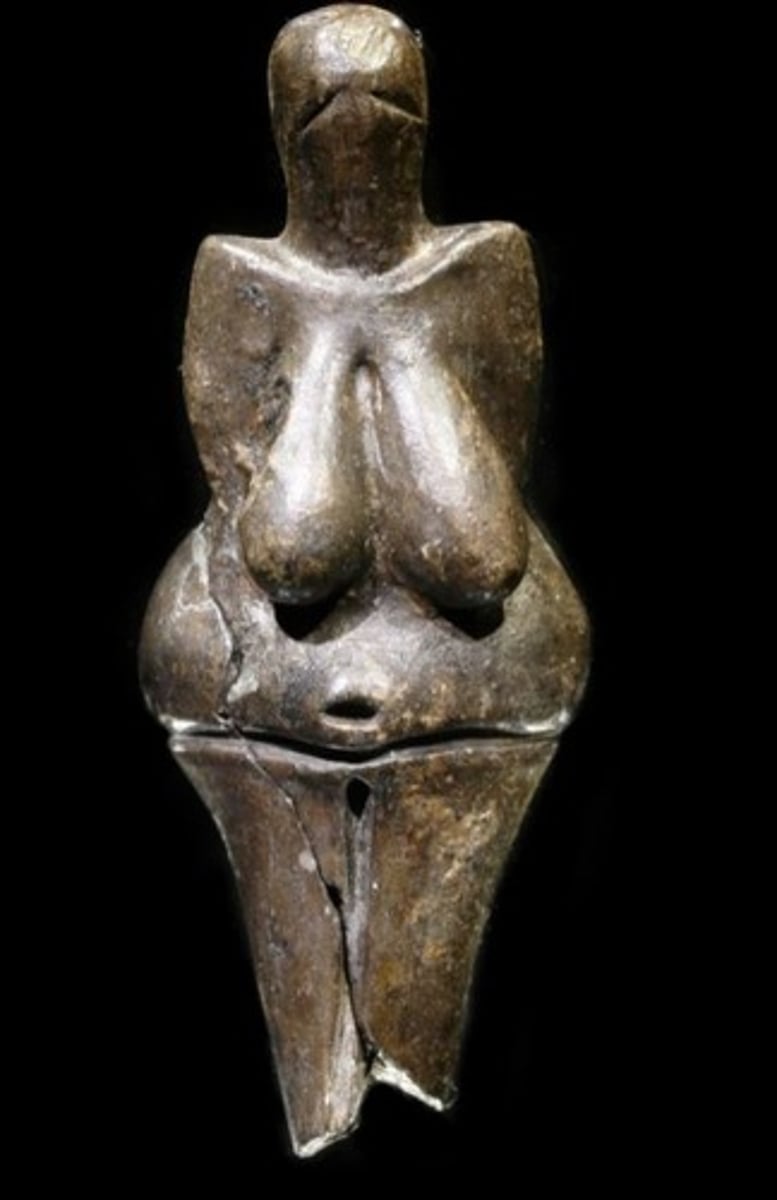
Venus of Lespugue (Fact 1)
Located in Slovakia, it is a Gravettian figurine
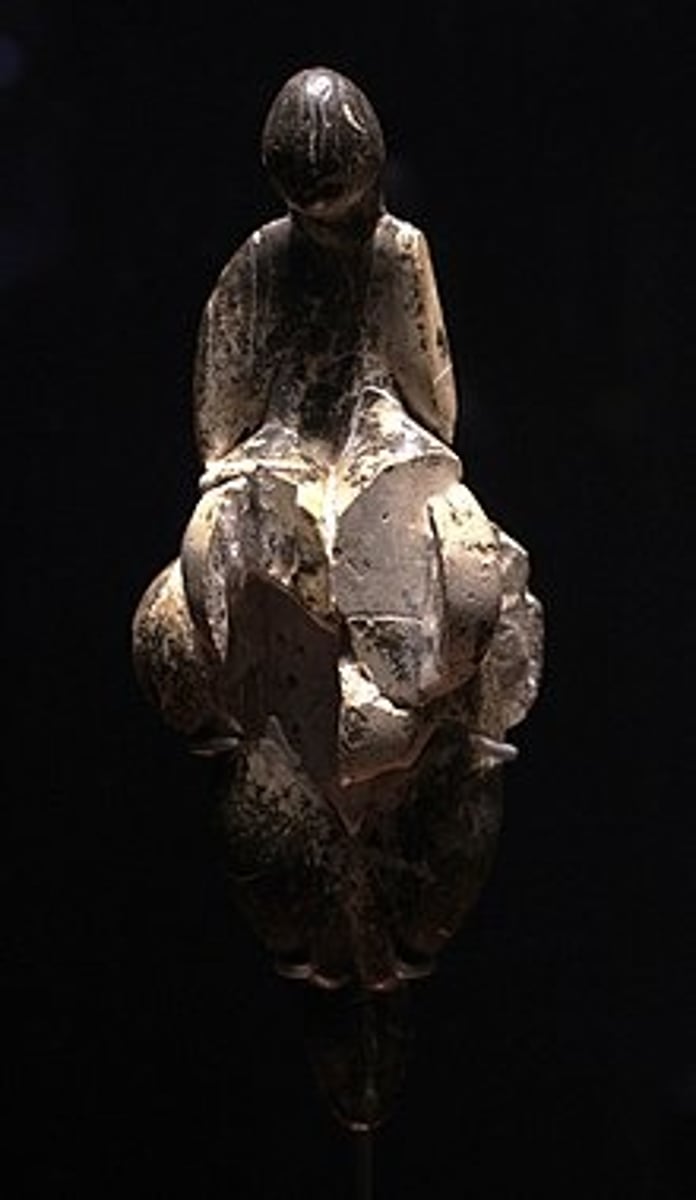
17 KYA - 12 KYA - The Magdalenians (Fact 1)
Prehistoric European civilization known for
Bones, reindeer antlers and animal teeth display crude pictures carved or etched on them of seals, fish, reindeer, mammoths and other creatures.
The best of Magdalenian artworks are a mammoth engraved on a fragment of its own ivory;[dubious – discuss] a dagger of reindeer antler, with a handle in form of a reindeer; a cave-bear cut on a flat piece of schist; a seal on a bear's tooth; a fish drawn on a reindeer antler; and a complete picture, also on reindeer antler, showing horses, an aurochs, trees, and a snake biting a man's leg. The man is naked, which, together with the snake, suggests a warm climate in spite of the presence of the reindeer.
In the Tuc d'Audoubert cave, an 18-inch clay statue of two bison sculpted in relief was discovered in the deepest room, now known as the Room of the Bisons.[7]
Examples of Magdalenian portable art include batons, figurines, and intricately engraved projectile points, as well as items of personal adornment including sea shells, perforated carnivore teeth (presumably necklaces), and fossils.
Cave sites such as Lascaux contain the best known examples of Magdalenian cave art. The site of Altamira in Spain, with its extensive and varied forms of Magdalenian mobiliary art has been suggested to be an agglomeration site where groups of Magdalenian hunter-gatherers congregated
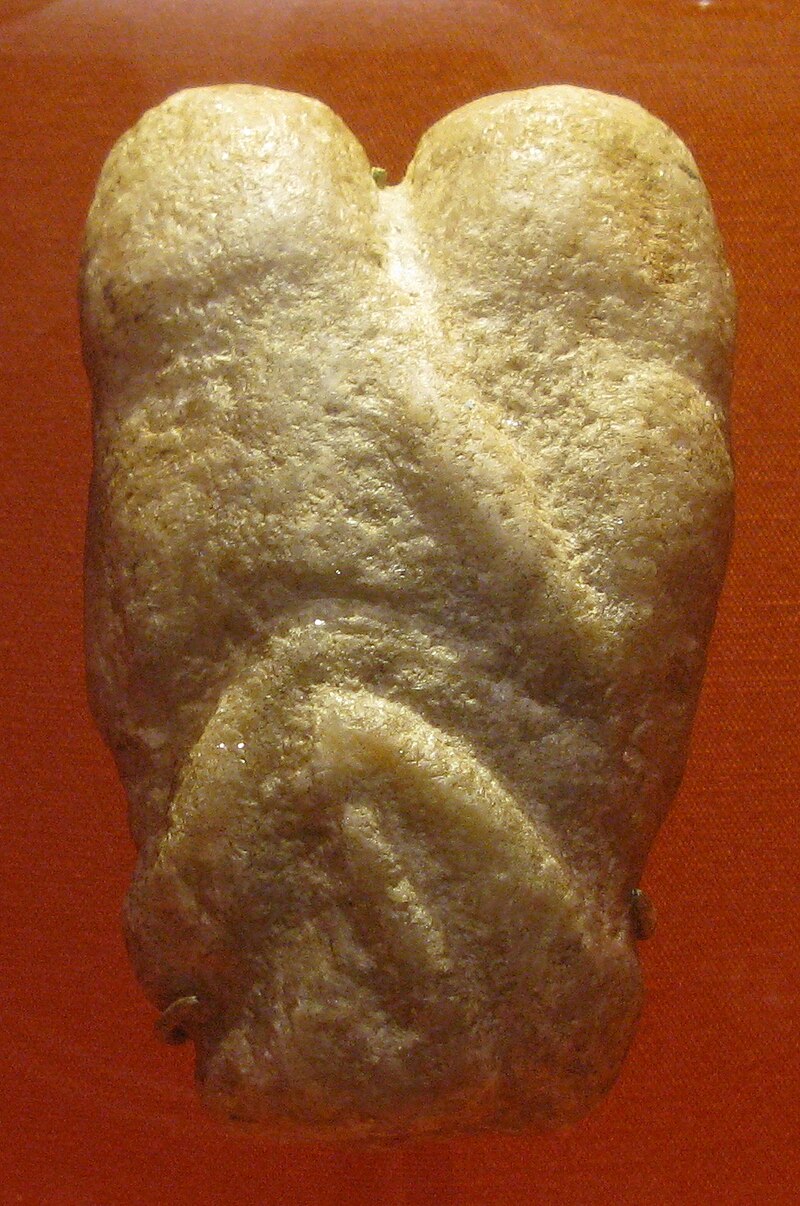
9000 BCE - Natufians: Ain Sakhri Lovers
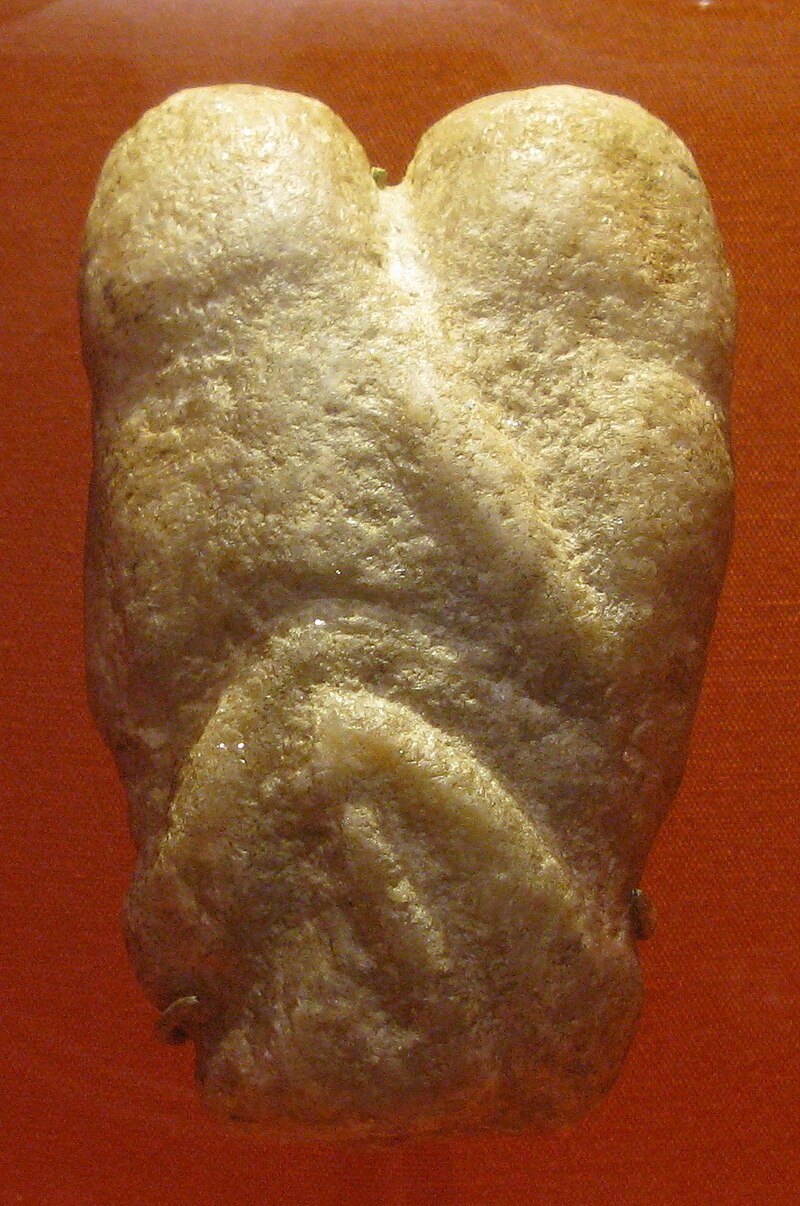
4500 BCE - Megaliths of the Atlantic Coast
Each tomb consists of a passage leading to a chamber under a mound of rocks or earth
4000 BCE - European Megaliths (Fact 1)
Term used to refer to the burial chambers made out of huge stones and are encased in mounds of earth and stones, usually circular, which are built up in tiers to form a tall landmark situated on prominent hills and thus can be seen for many miles
4000 BCE - European Megaliths (Fact 2)
Term used to refer to the burial chambers made out of huge stones and are encased in mounds of earth and stones, where the stones in the northern regions were incorporated into long burial mounds resembling long-houses
4000 BCE - European Megaliths (Fact 3)
Such burial chambers were much more secure than actual homes, at least on the namesake continent at this time, in that the houses of native peoples remain insubstantial; it seems the people there would rather provide secure places of rest for their dead than shelter for themselves while they live
4000 BCE - European Menhirs (Fact 1)
Term used to refer to stones up to 35 feet high that are dragged to places of worship and set up singly; some of which were engraved with geometric designs
4000 BCE - European Menhirs (Fact 2)
Term used to refer to stones up to 35 feet high that are dragged to places of worship and set up singly; some of which were shaped in human form
3700 BCE - Saharan Rock Paintings (Fact 1)
The namesake art traditionally consisted of the decoration of rocks with pictures of wild animals such as giraffes and elephants; however, due to the change in climate around this time, which was getting drier, the art changed alongside it in that desert animals were now being depicted
3700 BCE - Saharan Rock Paintings (Fact 2)
The namesake art around this time consisted of depictions of religious images, scenes from everyday life, and domesticated cattle, all of which reflect that the people who made this art lived in farming communities by this time
3400 BCE - Megaliths of the Atlantic Coast (cont.) (Fact 1)
Term used to refer to the complex architectural structures built to bury the dead consisting of a rectangular or round funeral chamber reached by means of a corridor
3400 BCE - Megaliths of the Atlantic Coast (cont.) (Fact 2)
Term used to refer to the complex architectural structures built to bury the dead in which the body is surrounded by polished hatchets, objects made of precious stones, necklaces, and pieces of pottery by this time
3400 BCE - Megaliths of the Atlantic Coast (cont.) (Fact 3)
Term used to refer to the complex architectural structures built to bury the dead which reached as far as Ireland and the Orkneys by 2000 BCE; their brooding presence is a reminder of how far man has come since the end of the ice age: from simply struggling for survival, he now honors his dead and worships his gods
3000 BCE - 2000 BCE - Carnac Brittany Megaliths (Fact 1)
One of the many structures being built that reflect the peak artistic and engineering skill of the builders of these monuments, it is made up of three separate sections, each with a dozen lines of massive standing stones which march in powerful array across four miles of the landscape
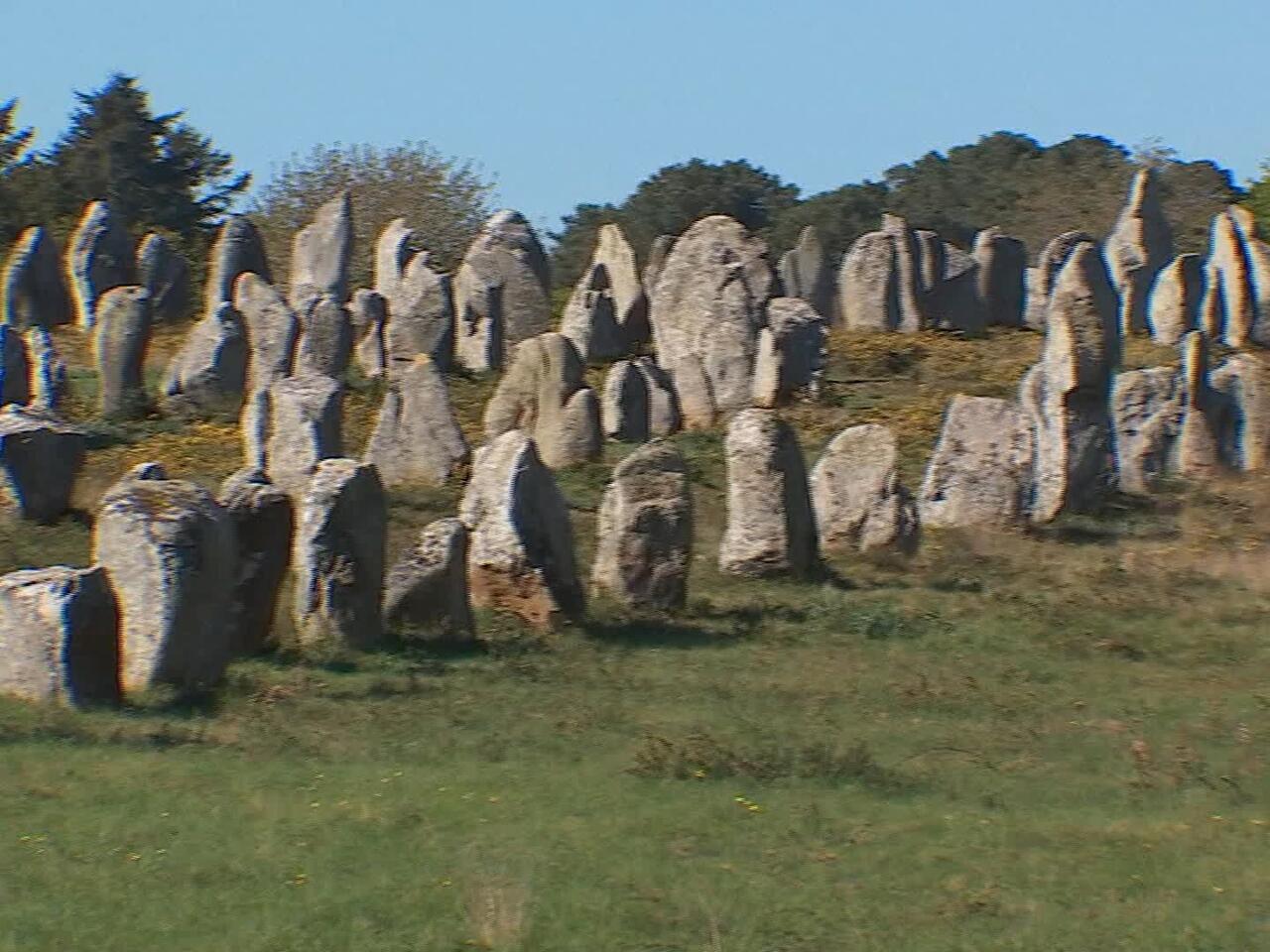
3000 BCE - Northern European Burials (Fact 1)
Region and time in which burials consisted of adult men being placed in individual graves under small, round mounds; and were accompanied by articles from daily life, including: drinking cups decorated with a pattern of twisted cord and stone battle-axes with a carefully drilled shafthole
3000 BCE - Northern European Burials (Fact 2)
Region and time in which such burials and the items placed within them, including the weapons and drinking equipment, are to be preserved in the graves to serve to emphasize the importance for the community of the competitive spirit and individual leadership
3000 BCE - Northern European Burials (Fact 3)
Region and time in which burial sites were relatively smaller and less permanent than in the past, indicating a greater readiness by people to move on and clear a fresh site for cultivation: so when harvests began to decline, another move would take place
3000 BCE - Northern European Burials (Fact 4)
Region and time in which it was believed that if the dead were left behind when people got up and moved, at least they had been given weapons to defend themselves and cups to drink from
3000 BCE - Northern European Burials (Fact 5)
Region and time in which burials coincided with the importance in farming of the introduction of the plough and the keeping of livestock with the new farms being seen in places never before settled by cultivators
2800 BCE - Pit Graves (Fact 1)
Burial practice developed in Ukraine at the time (a region thought unfit at the time for settlement because the land was too dry for simple farming techniques) in which there were hundreds of burial grounds where the dead were enclosed in wooden chambers and laid out in a distinctive position with the legs drawn up
2800 BCE - Pit Graves (Fact 2)
Burial practice created and maintained by a group of people from the steppes who spoke a language different from the peoples already living in Ukraine and Eastern Europe upon their arrival and who had already domesticated the horse and used wheeled vehicles for transport